New Build Contractors Blog
Is Buying a New Build Home a Good Investment?
September 15, 2025
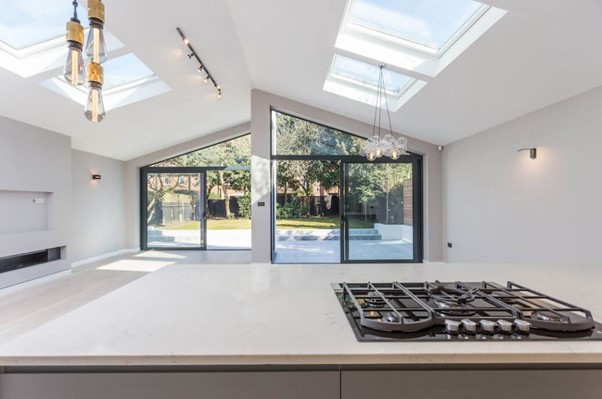
Buying a home is one of the most significant financial and emotional decisions you’ll ever make — and with so many new developments across London and the South East, it’s only natural to wonder:
Are new-build homes really a good investment?
At New Build Contractors, we’ve built and worked on hundreds of new homes — from bespoke one-offs to large developments. And the truth is simple: a well-built, well-located new home can be one of the smartest investments you’ll ever make.
But, as with any investment, it pays to know what you’re really buying.
Let’s take a closer look.
1. Why Buyers Are Choosing New Builds
There’s something special about being the first to live in a home. Everything is clean, efficient and designed for modern living. You don’t inherit someone else’s DIY disasters or outdated wiring.
Today’s buyers are choosing new builds for a few clear reasons:
-
Energy efficiency: New homes are built to far higher standards of insulation, glazing and ventilation. That means lower bills and better comfort, as energy costs rise.
-
Low maintenance: With brand-new systems, fixtures, and finishes, you can expect fewer repairs for years to come.
-
Peace of mind: Most new builds come with a 10-year structural warranty, so you’re protected if anything unexpected arises.
-
No chain or delays: Buying new removes the stress of waiting for other buyers to complete their sale.
All of this adds up to something powerful: security and simplicity.
2. The Investment Case for New Builds
From a financial perspective, new builds can perform well — especially in well-connected, growing areas.
According to long-term property data, new homes appreciate faster in value than older ones, particularly in regeneration zones. Early buyers often see the biggest returns as the area develops and infrastructure improves.
Other investment benefits include:
-
Energy cost savings: Efficient homes are more cost-effective to operate and increasingly attractive to future buyers or tenants.
-
High resale value: Modern layouts, smart technology and sustainability features make new homes more marketable.
-
Government schemes: Initiatives like Help to Buy or shared ownership can make entry easier for first-time investors.
-
Strong rental demand: In commuter belts and city suburbs, tenants are willing to pay a premium for a new, low-maintenance home. In short, a quality new build can deliver comfort and capital growth.
3. The Risks and Realities
Not every new build will deliver a good return. Some developments are rushed or priced at a premium that can take years to come down.
Here are a few things to be aware of:
-
Initial price premium: Developers often price new homes higher than nearby resales. That premium reflects the “new” factor but can soften in the first couple of years before growth stabilises.
-
Build quality variation: Not all builders operate to the same standard. Choose a reputable contractor or verified developer.
-
Limited space: Some volume-built developments prioritise density over space. Look for thoughtful design and proportion.
-
Leasehold or management costs: Some developments have shared areas or service charges that are included in the lease or management fees. Always understand the ongoing fees before making a purchase.
The key to avoiding these pitfalls? Due diligence. Visit the site, talk to the builder, review the warranty and don’t rush your decision.
4. The Long-Term Value of Quality Construction
When you buy a new build, you’re not just buying a home — you’re investing in how it’s built.
The materials, insulation, roofing and craftsmanship behind the walls determine the home’s real value decades from now. At New Build Contractors, we’ve seen time and time again that well-built homes hold and grow their value far better than cheaper builds that cut corners.
A few factors that directly impact long-term value include:
-
Solid foundations and structure: Reduces future movement or damp issues.
-
High-grade insulation and windows: Keep energy bills low and attract future buyers.
-
Durable roofing and cladding protect against weather damage and reduce maintenance.
-
Smart layouts: Open, flexible spaces that adapt to changing family needs.
A good new build isn’t just about looks — it’s built for performance and longevity.
5. Location, Location and Infrastructure
Even the best-built home can only appreciate if the location supports it.
Look for areas with:
-
Good transport links (Crossrail, new train lines or quick motorway access).
-
Local regeneration projects (retail, schools, parks and healthcare).
-
Growing employment opportunities.
These are the places where new builds thrive and attract buyers over time. Many of the best-performing new homes are located in regeneration zones, where councils are investing in new roads, transport, and green spaces. Early buyers often benefit from this long-term uplift.
6. Buying vs Building New
Some buyers purchase a newly completed home. Others prefer to build their own through a design-build contractor.
While building requires more upfront involvement, it often delivers:
-
A home tailored to your lifestyle rather than a standard layout.
-
Higher resale value due to individual design.
-
Full control over quality and specification.
At New Build Contractors, we see growing demand for bespoke homes — designed around family life, energy performance and style. Building from scratch can be one of the most rewarding investments you make, both financially and personally.
7. Making a Smart New Build Investment
If you’re considering a new build — whether buying from a developer or commissioning your own — here’s what matters most:
-
Research the builder or developer. Check reviews, warranties and aftercare.
-
Understand the area. Look at local growth trends and infrastructure plans.
-
Inspect the build quality. Visit show homes or completed sites if possible.
-
Get an independent snagging survey. It’s a small cost that protects your investment.
-
Think long term. Focus on energy efficiency, materials and layout that will appeal for years to come.
Conclusion
So, is buying a new build a good investment?
In most cases — yes. When the location, build quality, and timing align, new builds offer strong financial returns, low maintenance and a comfortable modern lifestyle.
They’re efficient, secure and designed for how we live today — and tomorrow.
Whether you’re buying or planning to build, New Build Contractors can help you make informed decisions — from feasibility and design to construction and handover.
Your home should be built to last, perform and grow in value — and that starts with choosing the right team.
Get in touch today to discuss your new build project or investment goals.
Hidden Costs to Watch Out For During Construction
September 5, 2025
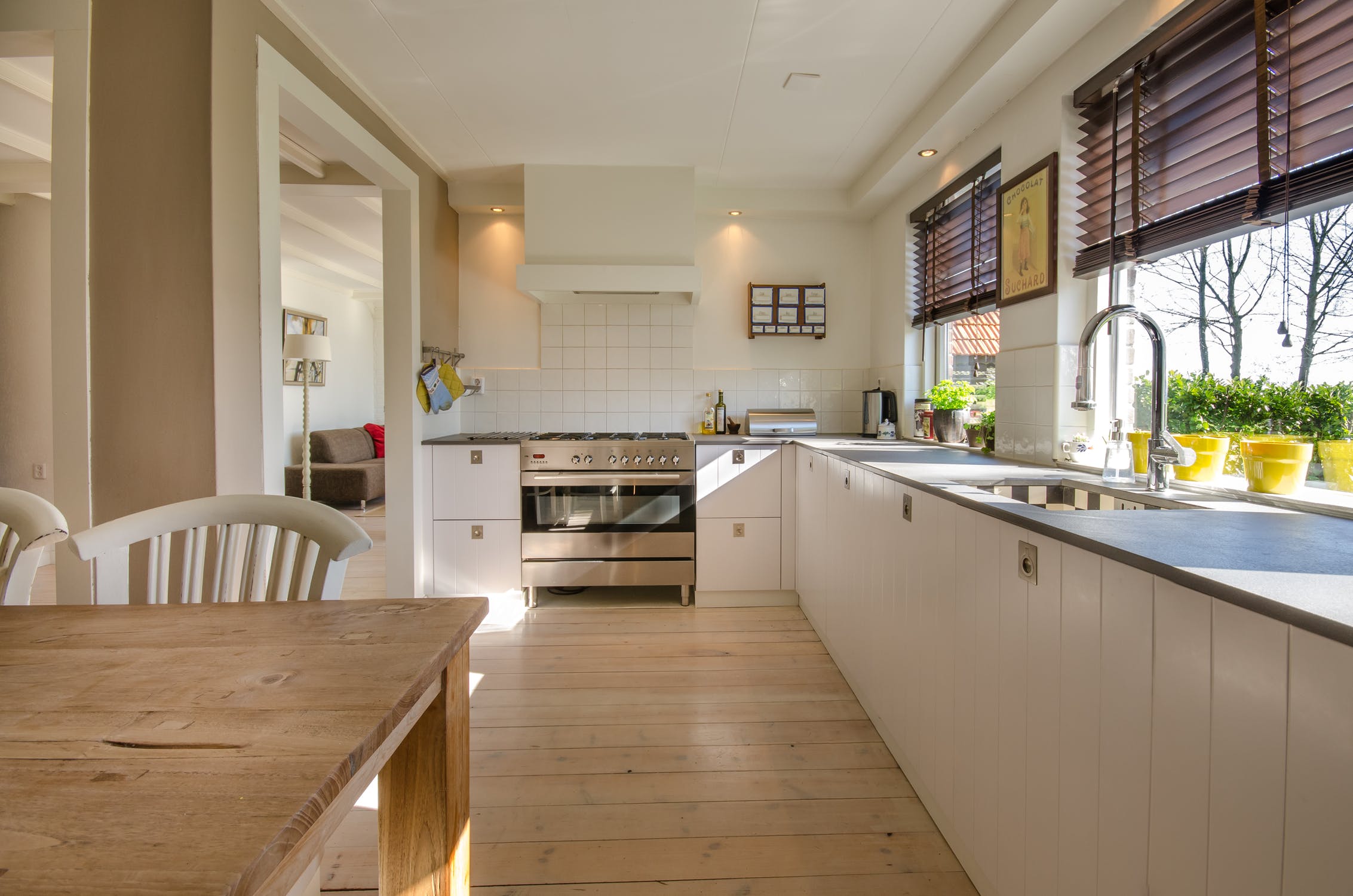
Building a new home or a significant extension is exciting, but even with the best planning, hidden costs can pop up when you least expect them.
At New Build Contractors, we’ve seen firsthand how small details can become expensive surprises if not addressed early.
Here’s what to look out for, and how to stay in control of your budget.
1. Site Preparation and Ground Conditions
Before foundations are installed, the site must be cleared, levelled, and tested.
Hidden rubble, old drains, poor soil or uneven gradients can add thousands in excavation, fill or piling costs.
Always include a site survey and soil test before you finalise the quote — it’s the cheapest insurance you’ll ever buy.
2. Permits, Inspections and Local Fees
Planning fees, building control inspections, party-wall agreements or Section 106 contributions can add up quickly.
Many clients budget for the build but forget the paperwork.
We always outline these early so you’re never caught out by local authority costs or re-inspection fees.
3. Utility Connections and Infrastructure
Bringing power, gas, water, sewerage or broadband to your new home isn’t always straightforward.
If the nearest mains are further than expected, trenching or new connections can cost more than anticipated.
Ask your contractor to confirm the distance to utilities and determine if any upgrades are necessary before work begins.
4. Design Changes Mid-Build
Every small change — moving a wall, changing a window size, upgrading to bi-fold doors — ripples through the project.
It affects materials, labour and sometimes structural calculations.
Agree on your design fully before you break ground and include a small contingency for changes you can’t resist later.
5. Finishes, Fixtures and Fittings
Most build quotes include basic allowances for kitchens, bathrooms and flooring.
When the time comes to choose, most homeowners want higher spec finishes — and that’s where hidden costs sneak in.
To stay on track, review the provisional sums in your quote and set realistic allowances for your taste and standard.
6. Weather and Delay Costs. In the UK, rain, frost or heat can delay pours, render or roofing.
Extended scaffolding hire, labour downtime and re-scheduling can add up.
A builder experienced in local conditions will plan buffer time into the programme to protect your budget and timeline.
7. Waste Removal and Site Cleaning
Skip hire, haulage and post-construction cleaning are often forgotten.
A tidy site is a safe site — but managing waste properly comes at a cost.
We include this in every quotation, so you know exactly what’s covered.
8. Landscaping and External Works
When the build is complete, you’ll still need driveways, patios, fencing or turfing.
These are easy to postpone but difficult to ignore once you move in.
Factor them into your total budget early, not as an afterthought.
9. Insurance, Warranties and Professional Fees
From site insurance to new-build warranties and structural engineers’ reports, these are essential but often missed.
If you’re financing through a mortgage, your lender may require certain cover before the release of funds.
Ask your builder to help identify mandatory vs optional protections.
10. Contingency Funds for the Unexpected
Even the best-managed projects need a buffer.
Industry best practice suggests setting aside 10–15% of the total build cost for unforeseen issues — whether that’s a supply delay, a design tweak, or a hidden defect uncovered during work.
How to Avoid Hidden Costs Altogether
-
Obtain detailed drawings and specifications before submitting your tender.
-
Ask what’s excluded in your quote — clarity avoids surprises.
-
Keep communication open — small decisions made late are the most significant cost drivers.
-
Work with a contractor who itemises and updates regularly so you always know where the budget stands.
At New Build Contractors, we build transparency into every project. Our cost breakdowns, progress reports and weekly updates help clients make informed choices before spending an extra penny.
Final Thoughts
Hidden costs can turn a dream build into a stressful experience — but with the right planning, they’re entirely avoidable.
By understanding where these costs come from and working with a builder who’s upfront about them, you can keep your project on track, on budget and stress-free.
The Stages of a New Build – From Groundworks to Handover
September 1, 2025
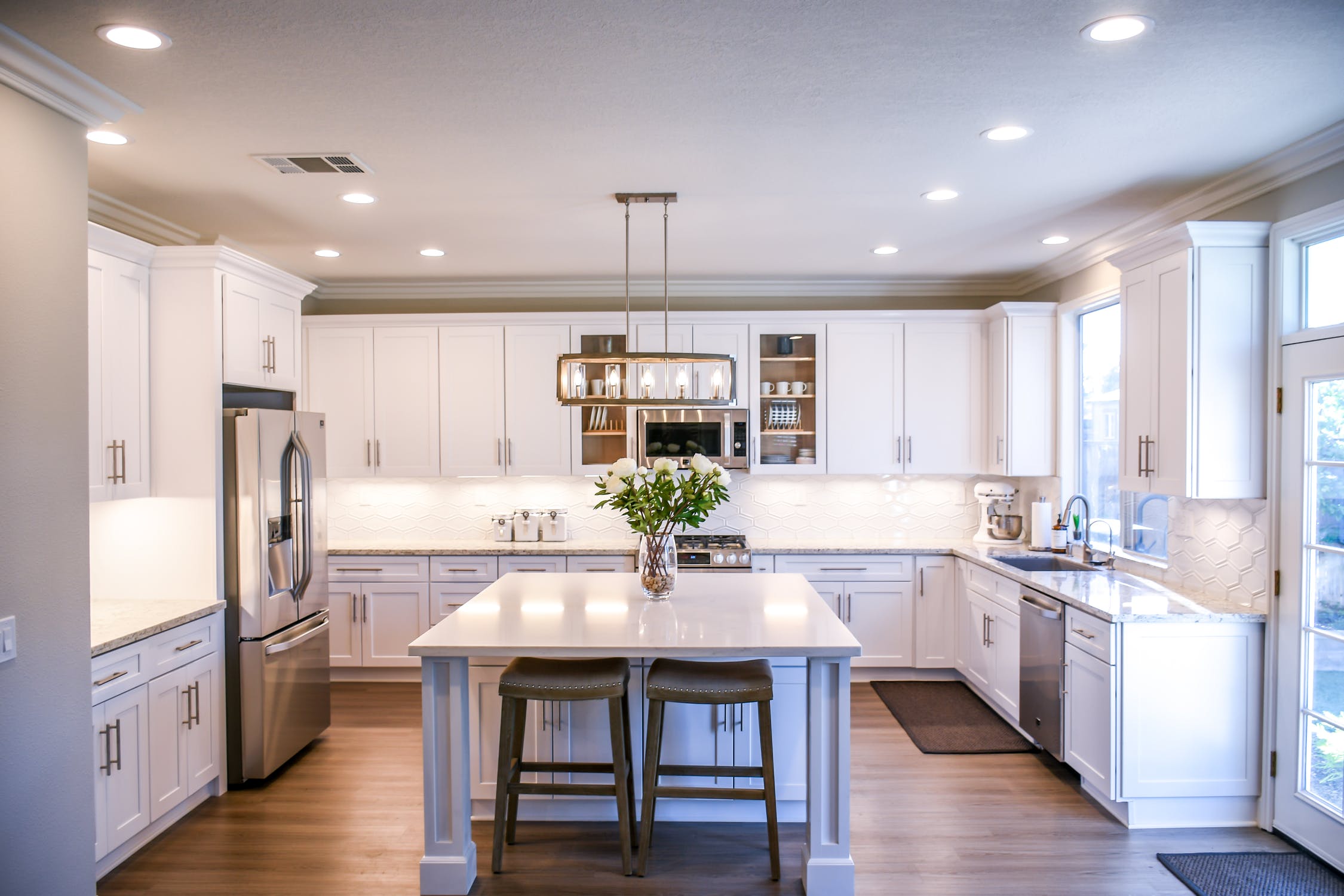
Building a new home is one of the most fun and rewarding things you can do — but it’s also one of the most complicated. From planning and design to construction and handover, each stage requires careful planning, coordination, and expertise.
At New Build Contractors, we guide our clients through the whole journey. Whether you’re building a bespoke home from scratch or a small residential scheme, understanding the stages of a new build will help you stay informed, confident and in control.
Below we break down each phase — so you know what to expect, when to make decisions and how to get a smooth build.
Site Preparation and Groundworks
Every great home starts with a solid base — but before that, the site itself needs to be prepared. This is often the most overlooked stage of the process, yet it’s crucial to the long-term success of your project.
Site preparation includes:
-
Clearing vegetation, debris and any previous structures
-
Setting up temporary site access and welfare facilities
-
Installing fencing, signage and safety zones
-
Carrying out soil investigations and topographical surveys
The results of your ground investigation will determine the right foundation type for your build. In London and the South East, for example, ground conditions can vary dramatically from one postcode to another. Clay-heavy or unstable soil often requires advanced solutions such as piled raft foundations — a method that combines both pile and raft systems for superior load-bearing and stability.
At New Build Contractors, we specialise in piled raft systems, enabling us to deliver stronger, more sustainable foundations that also reduce excavation and concrete waste.
Foundations and Substructure
Once the ground has been prepared, the focus turns to the foundations — literally the base of your home. The foundation design depends on soil type, building size and ground stability.
Common foundation types include:
-
Strip foundations: for smaller homes on stable ground
-
Raft foundations: for softer or uneven soil
-
Piled foundations: where deep stability is required
-
Piled raft foundations: for strength and cost efficiency. This stage involves setting out the exact building footprint, pouring the concrete foundations and installing any below-ground drainage or service ducts. A damp-proof membrane (DPM) is also fitted to prevent moisture from entering the structure.
This stage must be performed precisely, as any misalignment or weakness here can lead to structural problems later. Our engineers thoroughly check everything before the next phase begins to ensure everything is in order.
Superstructure and Frame
Once the foundations have cured, construction above ground begins. This is when your new build starts to take shape.
The superstructure includes walls, floors and the roof, which together form the building’s core frame. The choice of materials (e.g., brick and block, timber frame, steel frame, or reinforced concrete) depends on your design goals, energy efficiency targets, and budget.
During this phase, you’ll start to see the rooms take shape as internal partitions and window openings are formed. Structural integrity, alignment, and insulation are closely monitored to ensure long-term performance.
By the end of this stage, the property will be at the “watertight” phase, meaning the roof is installed and external windows and doors are fitted — the interior is protected from the weather and internal works can begin.
First Fix
The first fix covers all the essential but unseen elements that bring your home to life behind the walls and floors. This includes:
-
Electrical wiring and socket placement
-
Plumbing and heating pipework
-
Ventilation, air conditioning and waste systems
-
Internal stud walls and door frames
This stage happens before plastering and finishing, so it’s a key opportunity to review your electrical and lighting plans. Many homeowners underestimate the importance of this step in creating a practical layout — for example, ensuring that enough sockets, ambient lighting, and smart home cabling are in place before the walls are sealed.
A well-managed first fix means everything behind the surface is efficient, compliant and future-proof.
Second Fix and Internal Finishes
Once the walls are plastered, the second fix begins — and this is when your home starts to look like a finished living space.
This includes fitting visible elements such as:
-
Light fittings, sockets and switches
-
Taps, sinks, showers and sanitaryware
-
Internal doors and skirting boards
-
Kitchen units and worktops* Flooring, tiling and paintwork
This is the most exciting phase for homeowners as design details finally come to life. We also start final testing of all electrical and plumbing systems to ensure safety and compliance with building regulations.
Attention to detail is key here; precise finishes and high-quality materials make all the difference in achieving a premium result.
Snagging, Inspections and Quality Assurance
Before handover, every new build undergoes a series of snagging checks and quality inspections. This is where we review the entire property to identify any small imperfections or adjustments that need attention.
Typical snagging items might include:
-
Minor plaster cracks or paint touch-ups
-
Sticking doors or window adjustments
-
Silicone finishes or alignment issues
-
Checking that appliances and fixtures are operating correctly
At New Build Contractors, we take quality control seriously. Every project is inspected not just by our site team but also by independent building control officers and warranty providers (NHBC, LABC or Build-Zone).
This ensures your new home fully complies with UK building regulations and warranty standards — giving you complete peace of mind.
Handover and Aftercare
Once the final checks are complete and the property has been signed off, it’s time for handover — the most rewarding stage of all.
You’ll receive a full handover pack which includes:
-
Building control completion certificates
-
Electrical and gas safety certificates
-
Structural warranty documents
-
Appliance manuals and maintenance guidance
We’ll also walk you through your home’s key systems — from heating controls to ventilation units — to ensure you’re comfortable operating all the systems.
Even after handover, our aftercare team is available to support you. It’s normal for new homes to experience slight settlement or adjustment within the first few months, and we’re always on hand to address any queries quickly.
Key Takeaways
Building a new home is a detailed process with many moving parts, but understanding each stage helps you stay informed and confident.
At New Build Contractors, we manage every stage — from initial design and planning to construction, inspection and handover. Our commitment to quality craftsmanship, safety and transparent communication means every home we build stands the test of time.
Choosing the Right Roofing and Cladding Materials for Your Home or Development
August 29, 2025
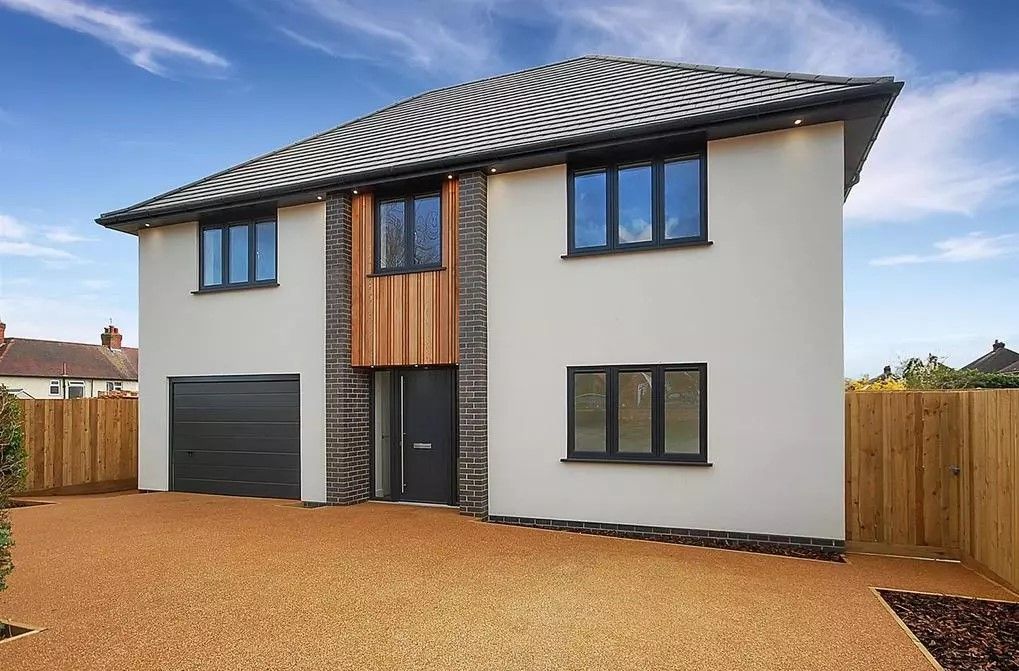
A Home That Lasts Starts from the Outside
Your home’s exterior is more than what people see from the street. It’s the first line of defence against the elements and the surface that defines your home for decades to come.
Choosing the proper roofing and cladding is one of the biggest design and build decisions you’ll make. It affects durability, energy performance, comfort and how well your property ages over time.
At New Build Contractors, we help clients across London and the South East navigate these choices — balancing performance, cost and style to create homes that look great and last.
1. Your Building’s Style and Location
Every site has its own story. A modern new build in Surrey will need different materials from a period home in North London or a coastal property in Brighton.
Your roof and façade should match the local environment — not fight against it.
-
In traditional areas, slate or clay tiles fit in with the surrounding homes.
-
For modern architecture, standing seam metal, fibre cement panels or render give a clean look.
-
In coastal areas, aluminium or zinc cladding is better than standard steel or untreated timber for salt and humidity.
By matching materials to the location, you protect the building and preserve its long-term appearance.
2. Durability and Lifespan
Different materials offer varying lifespans and maintenance requirements. It’s worth considering the long-term value of each option beyond the upfront cost.
| Material Type | Typical Lifespan | Key Benefits |
|---|---|---|
| Natural Slate | 70–100 years | Elegant, long-lasting, ideal for heritage and premium homes. |
| Clay or Concrete Tiles | 50–70 years | Excellent weather resistance with a wide range of colours and styles. |
| Metal Roofing (Zinc, Steel, Aluminium) | 40–60 years | Lightweight, low-maintenance, and fully recyclable. |
| Fibre Cement or Composite Cladding | 30–50 years | Durable, fire-resistant, and ideal for modern homes. |
| Treated Timber Cladding | 25–40 years | Natural warmth and texture; requires periodic maintenance. |
Durability often depends on local conditions — exposure to rain, frost, wind, and sunlight can all affect how materials age. Choosing the right one for your location ensures your home looks and performs beautifully for decades.
3. Maintenance and Weather Resistance
Your choice should strike a balance between aesthetics and practicality. A beautiful façade is only worth it if it performs all year round.
-
Metal roofs shed water and resist moss growth, making them perfect for low-maintenance builds.
-
Clay and slate tiles withstand the British climate but require occasional inspection for cracked pieces or loose tiles.
-
Timber cladding requires treatment every few years to prevent moisture ingress; composite cladding offers the same warmth without the need for maintenance.
If low maintenance is key, modern pre-finished cladding panels and powder-coated metals are great options.
4. Energy Efficiency and Sustainability
The best buildings today work with the environment, not against it. Both roofing and cladding play a massive part in that.
Modern systems can dramatically improve insulation, reduce energy bills and lower your carbon footprint:
-
Insulated metal panels offer both weather protection and thermal efficiency in a single layer.
-
Reflective roofing materials help reduce overheating in summer.
-
FSC-certified timber supports responsible forestry.
-
Recycled steel and aluminium offer high strength with minimal environmental impact.
Some clients also opt for green or living roofs, which provide insulation, absorb rainwater, and encourage biodiversity — a smart choice for eco-conscious developments.
5. Cost and Long-Term Value
Budget always matters, but the cheapest option rarely offers the best value over time.
Concrete tiles might save you money initially, but metal or slate will last decades longer and require less maintenance. Similarly, investing in insulated cladding can reduce heating and cooling costs year after year.
Think of material choice as a long-term investment — one that affects not just how your home looks but how well it performs.
6. Coordinating Roofing and Cladding Together
Roofing and cladding aren’t separate decisions. The best projects treat them as one continuous design, ensuring a seamless visual and technical connection between roofline and façade.
We often work with architects to ensure that:
-
Roof and wall materials match in tone and texture.
-
Joints, flashings and trims are detailed to prevent water ingress.
-
Insulation and ventilation systems connect smoothly between the roof and wall build-ups. When both are chosen togethe,r the result is a cohesive look that adds value, performance and curb appeal.
7. Sustainability in Modern Building
As the industry advances, sustainability is becoming a standard practice. At New Build Contractors, we encourage clients to choose eco-friendly materials wherever possible — not because it’s fashionable but because it’s good building.
We work with suppliers that provide recyclable and responsibly sourced materials, and we manage our sites to reduce waste. Every project is designed for long-term resilience, energy efficiency and low maintenance — principles that benefit both the environment and the homeowner.
8. Making the Right Choice
Choosing roofing and cladding materials can be overwhelming — especially when balancing design, performance and budget. The best place to start is with an honest conversation about what matters most to you:
-
Are you prioritising looks, durability, or eco-performance?
-
Do you like traditional textures or a modern finish?
-
How long do you plan to live in the property?
Once you have those answers, the right options become obvious.
Conclusion
Your roof and cladding define more than the look of your home — they shape its comfort, energy performance and longevity.
At New Build Contractors, we have experience from hundreds of projects, helping clients choose materials that suit their property, climate and vision. Whether it’s a zinc roof with clean lines, traditional clay tiles with character or modern composite cladding for a low-maintenance façade, we’ll help you make the right choice for the right reasons.
Because a well-built home isn’t just about how it looks today — it’s about how it stands, performs and endures tomorrow.
Building for the Future: Sustainable Materials and Practices for Modern Homes
August 20, 2025
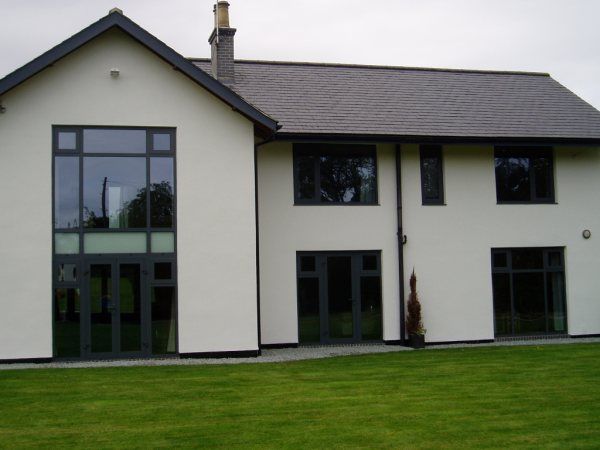
Sustainability in construction isn’t just a buzzword anymore, it’s the foundation of how we build. For homeowners and developers, it’s about building homes that perform better, last longer and cost less to maintain.
At New Build Contractors, we’ve seen the shift first-hand. Clients want homes that not only feel good to live in but also do good for the environment. The best part? Sustainable building doesn’t mean compromise; it means making smarter choices from the ground up.
Here’s how sustainable materials and modern practices are changing the way we build homes across London and the South East.
1. Building with Responsibility: Choosing Better Materials
Every build starts with materials — and the choices we make here have a lasting impact.
We now have access to a wide range of eco-friendly, responsibly sourced materials that reduce waste and energy use without sacrificing quality or strength. Examples include:
-
FSC-certified timber, sourced from responsibly managed forests.
-
Recycled aggregates and concrete reduce the demand for virgin stone and cement.
-
Low-carbon concrete alternatives utilising fly ash or ground granulated blast-furnace slag (GGBS).
-
Natural insulation materials such as sheep’s wool, cellulose or cork.
Choosing materials with a lower environmental footprint doesn’t just reduce carbon emissions, it creates healthier, more breathable homes.
2. Energy Efficiency Built Into the Design
A genuinely sustainable home performs well year after year.
That starts with designing for energy efficiency, not just adding features later.
Modern building techniques focus on:
-
High levels of insulation in walls, roofs and floors.
-
Airtight construction paired with mechanical ventilation systems for constant fresh air.
-
Triple-glazed windows and innovative shading systems to control heat gain and loss.
-
Renewable energy systems, such as air-source or ground-source heat pumps.
These choices reduce energy bills, lower carbon emissions, and create a more comfortable home all year round.
3. Reducing Waste, Reusing What Works
Construction waste accounts for nearly 60% of total waste generated in the UK — but that’s changing.
On our sites, we plan to minimise waste at every stage. Materials are ordered precisely, offcuts are reused, and recycling partners ensure that waste timber, metal, and aggregates are reprocessed rather than sent to landfills. This also saves costs and keeps sites cleaner and safer.
4. Local, Low-Impact Sourcing
Sustainability isn’t just about what you use, but where it comes from.
We source locally wherever possible. Shorter transport routes result in lower emissions, and collaborating with local trades supports the regional economy.
It makes practical sense too — fewer deliveries mean fewer delays and a smoother build process.
5. Durable Design for the Long Term
Building sustainably also means building to last.
Durable materials, such as engineered timber, lime render, and fibre cement cladding, perform beautifully and age well.
By designing for the long term rather than short-term trends, we minimise the need for costly repairs or replacements in the future.
A well-built, well-insulated home can stand for generations — and that’s the most sustainable outcome of all.
6. Smarter Water and Air Management
Modern sustainable homes also utilise natural resources more efficiently.
Rainwater harvesting, permeable paving and efficient plumbing fixtures reduce water consumption.
Green roofs and landscaping improve air quality and biodiversity.
Together, these systems create homes that are not just efficient — they’re alive with natural balance.
7. Sustainable Doesn’t Mean Expensive
A common myth is that sustainability adds cost. In reality, it’s an investment that pays back quickly.
Better insulation means lower heating bills.
Durable materials mean fewer repairs.
Energy-efficient systems increase your property’s long-term value.
And as energy costs rise, sustainable design becomes not just responsible — but financially sensible.
8. How New Build Contractors Are Building Smarter
At New Build Contractors, sustainability is integrated into every stage of our work — from concept design and planning to final handover.
We:
-
Work with FSC-certified suppliers and local material specialists.
-
Use energy efficient building methods including airtight construction and precision insulation.
-
Manage waste responsibly through on site segregation and recycling programmes.
-
Incorporate renewable technologies into new builds and extensions.
For us, sustainability isn’t a trend — it’s the standard for high-quality construction that benefits the homeowner and the planet.
Conclusion
Sustainable construction isn’t about ticking environmental boxes. It’s about building homes that feel better to live in — quieter, warmer, cleaner and more efficient. We build homes that work for people today and for years to come.
If you’re building new or extending an existing project and want to know how sustainable materials and practices can fit into your project, talk to us. We’ll walk you through all the options — practical, affordable and long-lasting.
Contact New Build Contractors
Should You Move Out During a Home Renovation or Extension?
August 10, 2025

If you’re planning a renovation or extension in London, there’s one question every homeowner eventually faces:
Should we move out while the work’s going on, or try to stay put?
It sounds like a simple choice, but once the dust, noise, and daily disruption begin, it can make all the difference. Over the years, we’ve worked with hundreds of families across London and the South East, and we’ve seen both sides of the story. There’s no right or wrong answer — just what’s right for you.
Living Through a Renovation: What It’s Really Like
Let’s be honest, living on a building site isn’t easy for anyone, and it's even more challenging if you have a family to look after.
Even with the most organised team, construction creates dust, noise, and constant change. Rooms change from one stage to the next. Temporary walls go up. Flooring comes out. The kitchen might be out of commission for weeks, and mornings start early with deliveries and drills.
For smaller projects such as a single-storey extension or minor refurbishment, many families manage by sealing off part of the house and adjusting their routines. But for major structural work, whole-house refurbishments or anything involving new plumbing or electrics, living through it can quickly become overwhelming.
We’ve seen it happen: excitement in week one, frustration by week four, exhaustion by week eight.
When Staying Makes Sense
We believe that sometimes staying home is excellent. If your renovation only affects part of the house and you have access to essentials like a working kitchen and bathroom, staying can save you rent and keep family life familiar.
It’s also manageable if the project is short, say six to eight weeks, and your builders have clear boundaries in place.
At New Build Contractors, we often work in phases, allowing families to stay on site. We set up dust screens, use protective floor coverings and schedule noisy work around your day where possible. Clear communication makes a huge difference — knowing which rooms will be off limits and for how long helps you plan.
When It’s Better to Move Out
For larger or longer projects, moving out is almost always the better option.
If your renovation involves major structural changes, such as removing walls, replacing roofs, rewiring, or complete heating installations, the house may not be safe or practical to live in. Power and water may be off for days at a time. Floors may be open. Access routes change. Living there can also slow down the build. Every day spent cleaning, clearing or working around occupied rooms adds hours to the project timeline. Builders can’t start early or stay late, and deliveries have to be timed around family needs.
We had a client who moved out halfway through, and the difference was dramatic. The build sped up, trades could work uninterrupted, and the entire project was completed three weeks earlier than planned.
Cost
Yes, moving out means incurring extra expenses such as renting elsewhere or staying with family for a few months. But time is construction money.
If living off-site helps the project finish faster, you often recoup that cost through reduced labour hours and increased site efficiency.
It also helps your sanity. There’s real value in coming back to a clean, completed home rather than enduring the mess day after day.
Family, Pets and Daily Life
If you have young children or pets, moving out isn’t just convenient; it’s safer.
Renovations can expose sharp edges, tools, cables and open floors. Even in controlled environments, homes become unpredictable spaces.
For families, the noise and dust can feel endless. We’ve seen parents trying to work from home during major works — it’s stressful, and no amount of headphones can cancel out the sound of a hammer drill.
If staying is your only option, plan early. Set up a temporary kitchen and use portable storage to protect belongings. Keep at least one “clean zone” in the house for downtime.
How to Decide
Here’s a quick way to think about it:
-
Small project (one or two rooms)? You can probably stay — just expect dust and disruption.
-
Whole house renovation or large extension? Moving out is safer, faster and less stressful.
-
Do you have kids, pets, or work from home? Strongly consider temporary accommodation.
-
Tight timeline? Moving out usually means the job gets done sooner.
If you’re not sure, ask your builder for an honest assessment. A good contractor will clearly communicate what to expect and help you make the right decision.
Final Thoughts
Renovating or extending your home is exciting; it’s the stage where you see your ideas come to life. But it’s also demanding. The best decision about whether to move out isn’t about money or convenience; it’s about what will help your project run smoothly and safely. At New Build Contractors, we’ve done every type of project from small kitchen extensions to full new builds — and we know how much planning makes a difference. We’ll provide you with honest advice based on your project’s size, schedule, and comfort.
Get in touch before you start renovating and we’ll help you weigh up the options, plan the timeline and make your home renovation as stress-free as possible whether you stay or move out during the build.
Is Buying a New Build Better Than Renovating an Old Property?
July 30, 2025

It is quite a dilemma for home buyers to decide between buying a new build house and investing in renovating an old one. If you plan to invest in the renovation of an old building, the upfront cost might be lower than purchasing a new one. However, you can’t say for sure how long the old building will last. It may have settlement issues or hidden structural damages, which might attract further renovation costs.
On the other hand, a new build home does not need immediate repairing. So, your return on investment for the property will be higher. After a few years, if you decide to sell it, you may get handsome returns.
In this blog, we discuss whether it is better to buy a new build home or invest in the renovation of an old building.
Cost Comparison: Upfront vs Long-Term Investment
Did You Know that if you are a first-time home buyer, then you can buy a house at least 30% off the market value? Under the First Homes scheme, the developers offer you the property after applying the discount to the property value. The property should not cost you more than £250,000, or if the property is in London, it should be under £420,000.
Moreover, you do not have to pay VAT on the purchase of new-build houses. The sale of such property is zero-rated, which means 0% VAT is included in the sales price.
On the other hand, if you renovate an existing property, you pay 20% VAT. Besides, you also have to consider the long-term investment and ROI for renovating the old building.
It seems that investing in a new build home is better than renovating an old one.
Energy Efficient Buildings Construction
The UK households are a great source of greenhouse gas emissions. However, the UK government is committed to achieving the net-zero target by 2030. So, Part L of the Building Regulations will now ensure that new build houses install clean heating systems, solar PV, and apply a fabric-first approach.
On the other hand, old buildings might still use fossil fuels to get hot water or for room heating. It does not align with the sustainability goal of the country.
Planning, Permissions, and Building Standards
You must get a Listed Building Consent (LBC) from the local planning authority to renovate an old building. It requires time and resources to apply for and get permission for building renovation. However, if you buy a new build home, the developer gets the planning permission to construct the new building. You don’t need to invest your time and resources in getting planning permission.
Moreover, you can get an NHBC (National House Building Policy) Buildmark warranty on new build homes. It is a 10-year insurance policy that covers newly built homes against construction and structural issues.
Lifestyle, Design Freedom, and Customisation
If you decide to purchase a new build home, you will have the opportunity to customise the house. You can install SMART technology or apply an open plan living approach for the house.
On the other hand, if you plan to renovate an old building, you may not be able to customise the design, but you can keep the traditional look of the property. The historic characteristic of the building’s architectural design can be considered valuable.
However, you will have to consider the structural condition of the building before you decide to maintain the aesthetic charm of the old building. If it is not structurally strong, renovating the building would be a waste of resources.
Resale Value and Market Appeal
New build homes may lose value over the years, but first-time buyers prefer buying one for its long-term value. On the contrary, period homes built before World War I in Oxford, Bath and other areas of London still hold value for their architectural features.
Needless to say, the resale value of the old houses determines how well it has been maintained. If sound quality construction materials are not used during the renovation, the building will not last for a long time.
Before investing in the renovation of an old building, remember that buyers are looking for low-maintenance and energy-efficient homes in 2025. If your renovation approach does not follow sustainable practices like fabric first and others, the new customers might not prefer it.
Conclusion
It is better to invest in a new build home, rather than investing in the renovation of an old building. New buildings will not decay or be damaged within years, but old buildings might. Moreover, you can get a new house at a discounted rate, and it can also be VAT-free.
So, why invest in renovation when you can purchase a new build home at a discounted price? Invest in a new build house today! Get in touch with New Build Contractor to build a new house or building.
Challenges and Solutions of Constructing Commercial Properties in Congested Areas of London
June 25, 2025

Did you know that between 2014 and 2024, the average planning permission acceptance rate for commercial properties in England was 91%? It reveals the rapid growth of commercial buildings in the UK, as well as in London.
The city of London is considered a major contributor to the United Kingdom's economy. It is only natural that the growing number of commercial buildings in London has made it a congested area. If you are planning to build a commercial building in the city, you ought to face construction challenges. Site accessibility challenges, planning permission complexity, power, and risk related to worker safety might be significant factors.
In this blog, we will guide you through the challenges and their potential solutions when constructing commercial properties in congested areas of London.
The Urban Density Challenge
As per data from 2022, there were 8.9 million residents living in London. It becomes challenging to conduct construction work in such a densely populated area. Additionally, a lack of open space makes it more difficult to transport construction materials and machinery to the construction site.
Pedestrians and vehicles in the city make it more complex for construction workers to complete their job seamlessly. Even if you put restrictions on traffic, the situation becomes more complicated. Stranded vehicles create a more complex scenario for newly arriving vehicles
Solution
To resolve the issue, multiple options can be considered. For example, you can use just-in-time delivery logistics to transport necessary construction materials to the site. So you would not need additional space to store concrete materials.
Alternatively, prefabricated construction components can be used to expedite the construction process. You can construct building parts at another site and transport them to the construction area. In this process, you would not need to bring any construction machinery or equipment to the construction site.
Planning and Regulatory Barriers
It is fairly difficult to obtain planning permission in the UK if it does not comply with legal regulations. If you plan to build a concrete structure in a protected area, obtaining planning permission approval can be challenging.
Moreover, if the new building is near a heritage site or residential zones, then you might not get permission to build a high-rise commercial building. To obtain planning permission, it is essential to comply with the regulations governing the construction of commercial buildings in the UK.
Solution
Hire an experienced planning consultant with knowledge of the London Borough Council regulations. Besides, you should also conduct a community consultation. Understand the possible issues and challenges which the neighbours might face if you conduct a commercial construction project.
Limited Access and Site Constraints
You may also notice that the roads are not wide enough to accommodate equipment on site. Narrow streets and space constraints will be a challenging factor in bringing a construction crane and other large equipment. Moreover, there may be restrictions on working hours due to residents living near your commercial construction site.
Narrow streets and low bridges limit vehicle access.
Solution
You can use smaller, modular equipment that can be assembled on-site. So you can carry them easily and use them for construction work. Regarding working hours, I would like to request permission to work on weekends and night shifts. When working night shifts, be mindful of avoiding sound pollution.
Safety and Risk Management
For any construction work, risk assessment and safety measures are essential. Before you start constructing the commercial building, ensure that the workers are aware of the risks and understand the necessary safety measures. Dust and noise pollution in construction work can pose a significant risk to employees' health.
Solution
Provide safety training to all Workers employed in the construction work. Teach them how to use protective gear and safety equipment when working at heights. Please provide them with safety equipment to protect themselves from dust pollution and noise pollution at the construction site.
Utility Diversions and Underground Constraints
You may encounter issues when constructing a building on a site with existing underground utility lines. Such as pipes, sewers or other utility lines. It is unlikely that you will obtain permission to build a concrete building on such a site. Otherwise, you might accidentally disrupt the utility services.
Solution
If you get the permission to work on such a site with complex utility lines underneath, use ground-penetrating radar surveys to identify the lines underground. Plan your building construction accordingly to safeguard the utility lines.
Conclusion
Completing commercial construction projects in the congested areas of London can be challenging, but not impossible. Use proper materials and techniques to construct a commercial building carefully. Consult with residents to determine a suitable time to complete the construction job that minimises disturbance to their peace.
Top Hotel Construction Trends in the UK Hospitality Sector in 2025
May 28, 2025
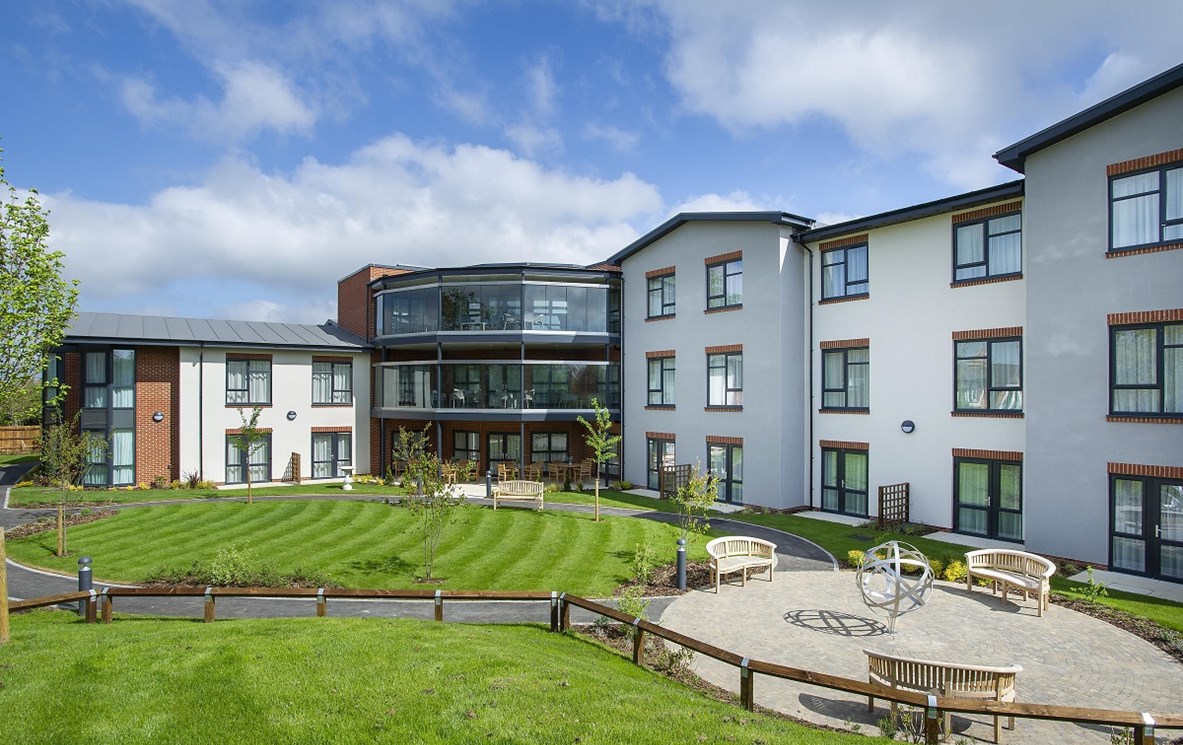
The hospitality sector in the UK is the fastest-growing economic sector in the country. Following the downturn during the pandemic period, the industry has experienced some positive growth. However, the industry has undergone significant transformations in its construction.
For example, the integration of touchless technology in hotels has recently become a mainstream practice. It offers quick check-in and check-out from the hotels. Besides, focus on sustainable construction and the flexible use of hotel space.
In this blog, we will discuss the latest construction trends in the hospitality industry that you should know in 2025. So, let’s begin the discussion
Emphasis on Sustainable & Eco-Friendly Construction
The UK government has committed to achieving the Net Zero target by 2050, meaning the country will minimise carbon dioxide emissions or capture the emitted CO2 from industrial activities.
In the construction of hotels, achieving the zero-emission goal is the new demand. The construction workers and contractors are committed to utilising a construction method that does not cause CO2 emissions. Some of the ways to improve the sustainability score during the construction include using solar panels to reduce the usage of traditional energy, using construction materials that have a low carbon footprint, etc.
Finally, getting a BREEAM certification is also a priority for hotels.
Off-site or Prefabricated Construction Methods
After the tourism and hospitality industry recovered from the COVID-19 pandemic, competition in the sector is on the rise. Businesses prefer a fast and functional business set-up as soon as possible to get back into the business.
To meet client demand, an off-site or prefabricated construction method is on the rise. With the prefabricated construction method, the business experiences minimal downtime. The quicker the construction process, the faster the company can set up offices and hotel rooms.
For example, Premier Inn in the UK has used the modular construction method to set up its hotel rooms. This method offers excellent service to customers and design flexibility as well.
Smart Hotels: Tech-Driven Design
Technology and a premium experience in a luxury hotel go hand in hand. Modern construction work involves designing the hotel rooms and facilities to install advanced technologies. For example, Internet of Things (IoT) technology is offering customers a whole new experience. Automatic lighting and customised room temperature technologies also help save on energy consumption.
Moreover, the construction works also make place for advanced technical designs like automated check-ins, app-controlled room service and many more. Hotel rooms are designed to fit in advanced technical devices. Ultimately, offering an excellent customer experience is the ultimate goal.
Wellness-Focused Hotel Design
In luxury hotel construction, the new trend focuses on the demand for fitness facilities, spa and wellness features. The hotel designers are now incorporating spa and other wellness facilities into the main offerings.
Construction contractors and designers are required to deliver according to the requirements. The focus on wellness and fitness is primarily on the business travel segment.
Multi-Use & Flexible Space Planning
The construction workers and building designs are incorporating are building hotels spaces to be used for flexible facilities. As per the demand of the clients, hotels can now present an open space to host a family party or, use it as a place to host indoor dinner parties.
Mostly places with limited space utilise these types of construction design.
Localisation & Regional Architectural Influence
Cultural tourism is on the rise in the hospitality and tourism sector across the global market, including the UK. To offer an experience of the local culture, hotel rooms are designed to reflect cultural sentiments.
It offers a unique experience to the customer during their stay in the hotel. If the hotel design is attractive and reflects the true nature of the local culture, customers will want to keep coming to the place. When hotels offer excellent customer experiences, they have an upper hand, making their identity strong in the market.
Focus on Construction Speed & Cost Control
Whatever the building design may involve, the construction cost and speed should not be compromised. Hence, the construction contractors have to follow a strict schedule.
Moreover, the pre-construction planning and the Building Information Modelling technique greatly help the construction process. Besides, integration of technologies has also been done in the construction process. For example, project management tools are a great way of speeding up construction work.
Final Thoughts: Staying Competitive in 2025
The modern hospitality industry is driven by innovation and competition in the market. Construction workers are trying to make the construction process faster through modular or prefabricated construction. Besides, the construction and building design process involves creating space to install technical devices for a better customer experience.
Residential Construction Trends to Watch Out for in 2024
August 24, 2024

Residential construction is subject to various trends driven by regulatory changes, homeowner preferences, and environmental factors. Here are some key trends expected to emerge in 2024 and beyond. Here are some key residential construction trends we expect to see in 2024 and the years after.
A Larger Focus on Smaller Homes
The UK dream is evolving. Smaller homes and compact allotments are gaining popularity as the rental market faces a crisis, with vacancy rates hovering around 1%. This urgency has prompted many to transition from renting to homeownership.
In response to the current affordability crunch, prospective homeowners recognize the value of opting for a smaller space without compromising quality and lifestyle. Innovative and stylish smaller home designs are set to take center stage, catering to this changing preference.
The time for action is now as Britishers are embracing a reimagined vision of the UK dream, one that prioritizes practicality and efficiency over excessive square footage. This shift represents a decisive move towards a more sustainable and accessible housing landscape for all.
Modular Construction
Modular construction will lead the way for a new era of efficiency in the building industry. By prefabricating components such as steel framing off-site, construction timelines will be significantly reduced. This method not only eliminates delays caused by human error and unpredictable weather, but also aligns with the growing demand for rapid development, particularly in large residential estates.
The advantages of modular construction are clear and compelling. It offers a streamlined, efficient approach that addresses the traditional construction industry's challenges. Prefabrication off-site ensures a more controlled and predictable process, minimizing disruptions and enabling faster project completion. This transformation is essential to meet the increasing need for expedited development, especially in the case of large-scale residential projects.
The industry must embrace modular construction as the way forward. It is a proven solution that will propel the building sector into a new era of efficiency, productivity, and responsiveness to market demands. The time for hesitation has passed; modular construction is the future, and it is time to embrace this transformative approach.
What are the evolving needs of clients in the residential and commercial sectors?
November 3, 2023

How are New Build Contractors adapting to the evolving needs of clients in the residential, commercial, and industrial sectors?
The construction industry is experiencing changes due to advances in technology, growing sustainability goals, and evolving client requirements. New Build Contractors being players in this field are continuously adapting to these shifts in residential, commercial, and industrial sectors. Let's take a look at how we are staying ahead;
Understanding Client Needs; New Build Contractors prioritize effective communication to align with their client's visions. We regularly engage in consultations and feedback sessions to ensure that changing requirements are promptly acknowledged and addressed.
Embracing Technological Advancements; New Build Contractors make the most of cutting-edge technologies like Building Information Modeling (BIM) for designing drones for precise site surveys and AI-driven analytics for efficient project management. These technological tools help streamline processes minimize errors and achieve levels of precision.
Focusing on Sustainability and Green Building Practices; Sustainable construction is now a demand well as a requirement from clients. New Build Contractors equip themselves with knowledge about materials, energy-efficient designs, and construction practices that have minimal impact on the environment.
Utilizing Modular and Prefabricated Construction Techniques; Popular in the commercial sectors; these methods significantly reduce construction timeframes while minimizing waste generation and overall costs. New Build Contractors leverage these techniques to deliver projects efficiently.
Flexible Designs: Flexibility is crucial, in the landscape of evolving work and living spaces. New Build Contractors understand this and prioritize designs that can easily adapt to changing needs whether its spaces that can be repurposed or commercial spaces that can be reconfigured with ease.
Safety First: In projects where there are machinery and potentially hazardous materials involved, advanced safety protocols and thorough training take center stage. Real-time monitoring systems and wearable technology are implemented to ensure the safety of workers.
Custom Solution for Sectors: Different sectors have priorities when it comes to construction projects. Residential projects may emphasize aesthetics and comfort while industrial projects focus on functionality and durability. To cater to these needs New Build Contractors are expanding their expertise to provide tailored solutions for each sector.
Learning and Training: The construction industry is constantly evolving, with new materials, technologies, and methodologies emerging. To stay ahead of the curve our contractors are committed to learning and training programs for their teams. This ensures we remain up to date with the advancements in the field.
Adhering to construction codes and regulations is not enough, for New Build Contractors; we strive to exceed these standards by incorporating practices and prioritizing safety measures. By doing we offer added value to their clients while maintaining compliance with requirements.
Cooperation; With the range of professionals involved in modern construction projects, such, as architects, engineers, interior designers and technology specialists New Build Contractors are prioritizing collaboration. Our aim is to integrate all aspects of a project by fostering an approach.
To summarize New Build Contractors are leading the way in transforming the construction industry. We embrace change and consistently align with client requirements setting standards, for residential, commercial, and industrial projects.
How to Ensure Office Spaces are Functional and Reflective of a Company's Brand and Culture?
September 22, 2023
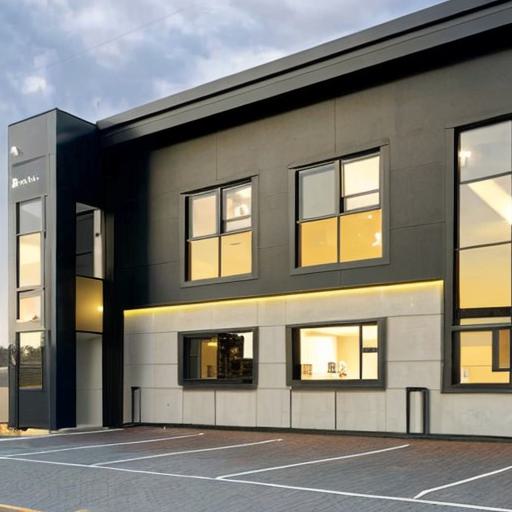
How do we ensure that office spaces are both functional and reflective of a company's brand and culture?
Creating office spaces that embody both functionality and the essence of a company's brand and culture requires a subtle approach. To begin New Build Contractors prioritize consultations, with our clients. This initial step ensures an understanding of the company's vision, core values, and operational requirements.
An effective technique is to integrate brand colors, motifs, and other elements within both the interior and exterior of the building. This visual alignment instantly associates the office space with the brand when anyone enters. In today's work culture, many companies are embracing open floor plans that foster communication and teamwork. However, it is crucial to strike a balance by providing areas for tasks and private discussions.
The choice of construction materials also holds significance for reflecting the brand. Many conscious brands may lean towards sustainable materials while luxury or exclusive brands may opt for premium finishes. Flexible workspaces that can be easily adapted to needs mirror the nature of modern businesses. They can seamlessly transition from hubs to workstations based on evolving employee requirements.
Another innovative approach involves theming conference rooms, around company products, values, or motifs. Not do these spaces provide areas, for meetings but they also pay homage to the company's heritage and core values. When it comes to office designs there is an emphasis on integrating technological infrastructure. In today's era it is crucial for spaces to have advanced built-in solutions, such as conference AV systems and user-friendly lighting and climate controls.
The overall decor of the office including artwork, murals, and sculptures serves a purpose. It adds beauty to the space while also reflecting the values and history of the company. Similarly, amenities chosen for the office like fitness centers or game rooms are more than employee perks; they represent the company's focus and cultural priorities. The exterior of the office should not be overlooked either; landscaping and architectural designs can further enhance brand alignment.
Regular feedback loops play a role throughout the construction process. Ongoing reviews with stakeholders ensure that everything stays aligned with the brand image and reflects its culture accurately. Additionally, post-construction feedback from employees can help identify areas that require adjustments in order to optimize the space further.
In essence, by combining design elements with considerations and maintaining open communication, with clients throughout the process, we can create office spaces that truly embody a company's ethos and operational essence.
Is A New Build Home A Good Investment?
July 13, 2023
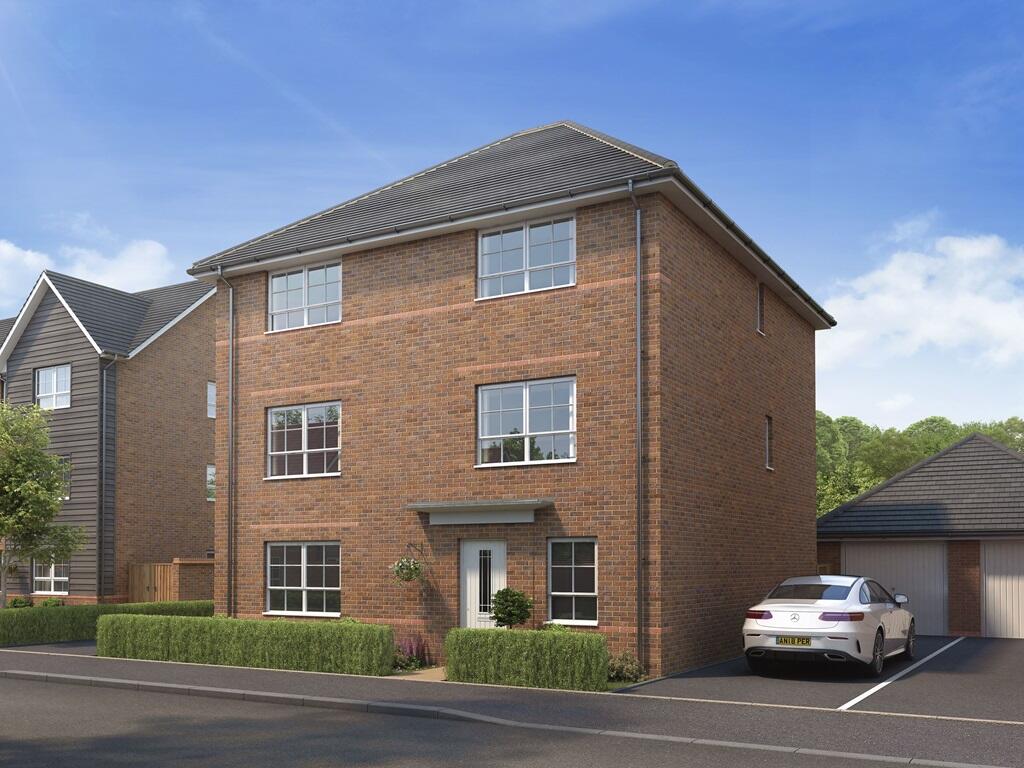
Is Investing in a New Build Property a Wise Choice?
As fully qualified builders based in London and the surrounding areas New Build Contractors have honed their skills over years transforming clients aspirations of owning their dream homes into reality. With our expertise, training and knowledge we can assist you in finding and creating the property that aligns with your needs, financial considerations and aesthetic preferences.
Leveraging our specialized knowledge we have curated this guide to help you navigate the possibilities of investing in a newly constructed property. By the end of this guide you will have an understanding of whether a new build property's the right decision, for you.
Throughout this article we will address some questions;
What exactly is considered a build home?
What can you expect to find included in a new build home?
How much does it typically cost to purchase a new build home?
How long does it take to construct a new home?
Is it possible to extend or expand upon a build home?
Are there any advantages, to buying a constructed property?
Defining A New Build Home
In simple terms a new build home refers to properties that have been recently constructed but are yet to be occupied by residents.The planning and design of constructed homes can be tailored to the clients preferences from the beginning. They can be purchased at any stage during or, after construction. New builds are often seen as a hassle investment choice for investors due to their pristine condition and minimal maintenance requirements, in the early years.
What Does a New Build Home Include?
When investing in a build home you can expect the following amenities and features;
Walls that are plastered and painted
installations that comply with EICR standards
Plumbing and drainage systems
Flooring and tiling
Fitted furniture
It's worth noting that new builds may have minor issues referred to as 'snags,' which could involve damaged or incomplete work. Keeping a snagging list to document these issues will help resolve them. We highly recommend hiring tradespeople for your build construction to avoid encountering such complications.How much does a build home cost? According to Checkatrade, the price of a build home can vary based on the number of bedrooms;
Three bedroom homes range from £130,000 to £300,000.
Four bedroom homes range from £200,000 to £500,000.
Five bedroom homes are priced between £280,000 and £600,000.
Constructed properties often come with a price tag due, to their excellent condition and low maintenance requirements compared to pre owned homes. However it's important to note that this premium may not be fully recouped upon resale. Therefore it is advisable to consider a build home as a long term investment.
How long does it take to build a home?
The duration of construction depends on factors such, as the size of the house complexity of its design the construction team involved and any unforeseen challenges that arise during the process.
Is it possible to extend a build home?
Extending a constructed property can enhance its value and appeal. Nonetheless keep in mind that the original contractors may have already maximized the propertys size and incorporated features. As a result immediate extensions or renovations might be limited in scope.Determining whether purchasing a constructed home is a wise investment depends on factors. However based on the information provided opting for a build can be a choice if;
The cost of builds is lower compared to properties, in your locality.
You plan on making the new build a long term investment.
The design and features of the build are likely to attract buyers or renters.
Trustworthy professionals are involved in constructing your new build.
You desire an investment property that requires hassle.
This guide presents an overview of the risks, benefits and potential rewards associated with investing in both constructed homes and existing properties. It aims to help you make a decision.
Whether you decide on a constructed property or a renovation project in England, our team at New Build Contractors is here to provide assistance. We offer services that prioritize your goals considering aspects as well, as aesthetics and practicality.
5 Tips To Build a Nursing Home: Strategies for Sustainable Success
July 7, 2023

5 Tips To Build a Nursing Home: Strategies for Sustainable Success
Creating Homes for the Future; Our team understands the evolving needs of residents as they grow older. We prioritize designing homes that're adaptable and comfortable. By anticipating these changing needs we can help you save time and money by avoiding modifications, in the future.
Ensuring Compliance with Accessibility Codes; We ensure that all our construction projects comply with accessibility codes in the UK. With our understanding of these regulations you can trust us to create an accessible nursing home environment for all residents.
Understanding the Cost; We provide an analysis of your investments life cycle cost covering everything from initial construction expenses to ongoing maintenance and staff costs. By considering these factors upfront we empower you to make decisions that contribute to a nursing home in the long run.
Bringing Together Top Professionals; Our team consists of qualified individuals, including architects, engineers, construction managers and legal experts. Their expertise, in nursing home construction ensures that your project will meet the standards.
A Streamlined Design Build Process; We adopt a design build approach that integrates both the design and construction phases into one process. This approach facilitates communication, significant time and cost savings while delivering an end result.
We aim to ensure that your construction experience is seamless while also creating a nursing home that's not a smart investment but also fosters a caring environment, for its residents. Get in touch with us today to discover how we can support you with your project to build a nursing home.
Important Factors During Construction of a Care Home
July 7, 2023
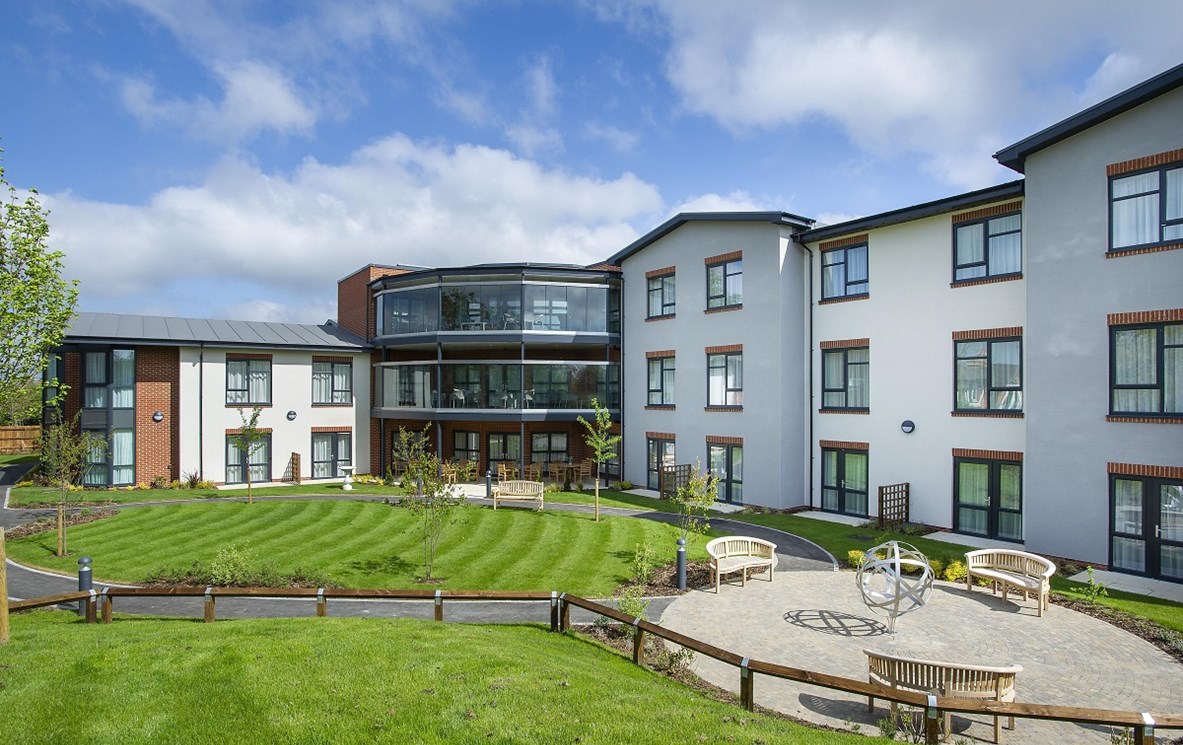
When constructing a care home, several key considerations need to be taken into account. One of the most crucial factors is effective communication. Without proper channels of communication established between the care home manager and the main contractor, disruptions can occur, leading to delays and added stress. It's important to hold regular meetings, both formal and informal, to discuss the project plan and keep everyone informed about which areas will be undergoing construction work. This way, care home staff can understand and prepare for any changes, and contractors can work around the needs of the residents.
Another key consideration is the competence of the contractor. It's not just about evaluating the quality of their craftsmanship, but also their ability to plan and manage construction work while prioritizing health and safety. Care homes must only engage contractors who adhere to CDM regulations, ensuring that the construction work is carried out safely and securely. Contractors must also be able to work around the needs of the residents, ensuring that their comfort and well-being are not compromised during the construction process.
The construction of a care home is a complex process that requires careful planning and execution. It's essential to work with contractors who have experience in this field, as they will be able to anticipate potential issues and provide solutions that meet the unique needs of the care home. With effective communication, competent contractors, and a focus on safety and well-being, care homes can be constructed to the highest standards, providing a safe and comfortable environment for residents and staff alike.
Managing construction work within a care home environment can be a challenging task, especially when the residents have dementia or physical difficulties. It is crucial to prioritize their safety and well-being during the construction process. To achieve this, we take several precautions to minimize any risks or stress caused by the construction activities. We may close off corridors, wings, or floors to prevent potential hazards, ensuring that the residents are not exposed to any danger. We utilize signs and physical barriers to restrict access to areas where construction work is taking place. This helps to prevent accidents or injuries involving residents, staff members, and contractors. We understand that safety is paramount, and we take all necessary measures to ensure that the construction process does not compromise the comfort and security of the residents.
In building projects for care homes, logistics planning is essential to maintain operations and avoid disruptions. We collaborate closely with care home management to develop a logistics plan that covers entry and exit routes within the care home premises. Our teams use separate access routes to those used by the care home itself, and designated areas are allocated for parking, deliveries, and internal and external storage requirements. This ensures that the construction process does not disturb the daily activities of the care home and its residents. By taking a planned logistics approach, we can effectively manage the construction process, minimize disruptions, and ensure that the care home's operations continue to run smoothly.
When planning a construction project, it is important to consider a variety of factors to ensure its success. One crucial aspect that should not be overlooked is the safety of those involved. This includes taking into account fire safety routes and provisions, as well as providing adequate sanitation facilities for contractors. As the project progresses, it is also important to maintain flexibility within the plan to accommodate any changes that may arise. This ensures that adjustments can be made accordingly and accounted for within the plan. By prioritizing safety and flexibility in the planning process, you can help ensure a successful and efficient construction project.
When embarking on a construction project, it's easy to get caught up in the excitement of the end result. However, it's crucial to remember that the safety of all those involved should always be the top priority. This means taking the time to carefully consider fire safety routes and provisions, ensuring that all necessary precautions are in place to prevent any accidents or emergencies. It's also important to provide adequate sanitation facilities for contractors, as this can greatly impact their productivity and overall satisfaction with the project.
As the project progresses, it's essential to maintain flexibility within the plan. This means being open to making changes and adjustments as necessary, to accommodate any unforeseen circumstances that may arise. Whether it's a delay in materials or a change in the project scope, having a flexible plan in place allows you to adapt quickly and effectively. By prioritizing safety and flexibility in the planning process, you can help ensure a successful and efficient construction project that meets the needs of all those involved.
Key Questions to Ask When Choosing a Contractor
July 4, 2023

Choosing the Right Builder; Important Questions to Ask
1. Is the builder trustworthy, suitable and qualified, for your project?
The reputation and experience of a builder are factors to consider. It's essential to choose a builder with a reputation in the local market and community. Before making a decision ask yourself these questions;
References; Has the builder successfully completed projects to yours? Can they effectively manage quality, cost and time?
Trade Memberships; Does the builder hold memberships with organizations?
Insurance and Contracts; Does the builder have adequate insurance coverage? Can they provide contracts and appropriate guarantees?
2. How does the builder uphold standards for craftsmanship, materials and products?
Achieving high quality work relies on using top notch materials employing construction methods and having craftsmen on board. Consider the aspects;
Craftsmanship; Who will be overseeing your project? Are their foremen and managers committed to delivering excellence?
Emphasis on Quality and Transparency; Does the builder prioritize quality workmanship while maintaining transparency in their processes?. Do they tend to take shortcuts?
3. Are the quotes offering products and services?
It's important to ensure that you are comparing offerings when evaluating quotes from builders. A comprehensive quotation will help you make a decision, about where to invest your money.
Make sure to ask the contractor for a description of what's included and excluded in their quote.
4. Will my project be completed within my budget and timeline?
During the tendering stage your builder should provide you with a breakdown of costs and a project schedule. It's important to inquire about how they will handle changes and how these might impact your project.
5. Does the builders reputation add value to their services?
The builders additional skills and knowledge can greatly enhance your project. Consider the factors;
Communication; Can the builder effectively communicate with architects and engineers offering suggestions?
Innovation; Is the contractor open, to implementing ideas and keeping up with industry advancements in products and techniques?
Sustainability; Does the builder incorporate energy practices and prioritize eco friendly work methods?
6. What is the preferred method of payment for my builder?
It's vital to have clear payment terms documented in writing. Typically stage or milestone payments are expected than upfront payments for work.
Choosing a build contractor in West Sussex is a decision. At New Build Contractors we are dedicated, to addressing these inquiries and surpassing your expectations. Lets shape your future together.
An Energy-Efficient Home: Your Key to Cutting Down on Rising Energy Costs
June 29, 2023
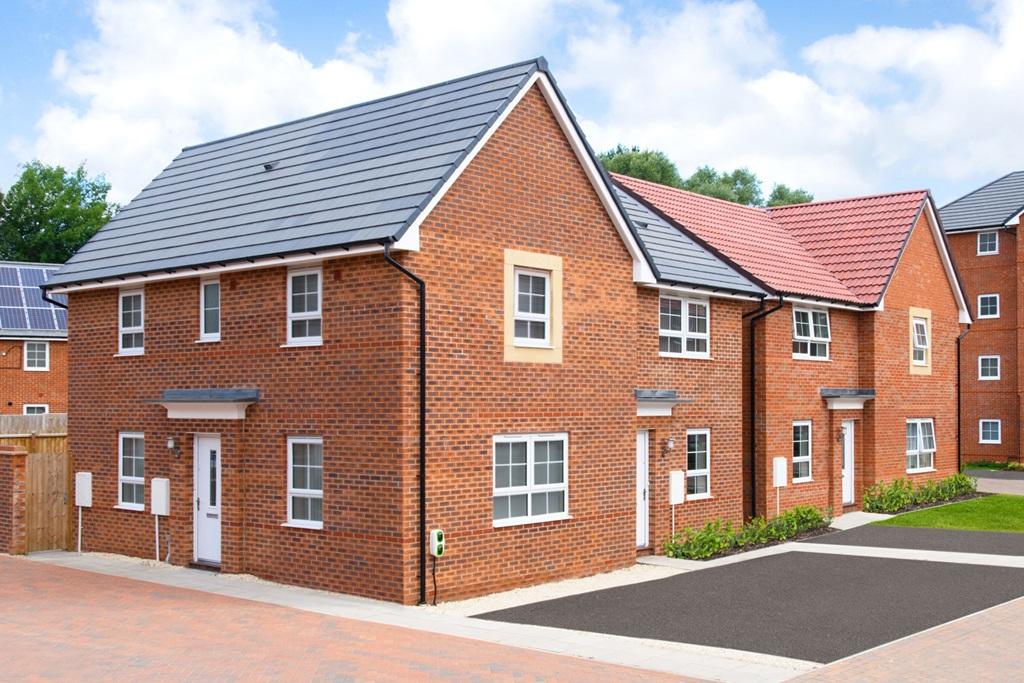
Energy prices are, on the rise affecting people from all walks of life. It's crucial to find solutions to address this issue. While it may require some investment the long term benefits make it worthwhile. In this article we will guide you through steps that can help you in your quest for energy efficiency highlighting how our expertise as construction contractors can be of assistance.
1. Insulating Your Home; A Vital Step for Energy Efficiency
When it comes to conserving energy insulation is key. As contractors in builds we highly recommend installing insulation in critical areas like attics that are prone to allowing cool air infiltration.
It is especially important to insulate your conservatory. While they provide a retreat during summers they tend to lose their effectiveness in winter when heating your home becomes challenging due to cold air seepage. Installing panel insulation on the roof of your conservatory can significantly reduce heat loss and lower energy costs.
2. Door Insulation; A Simple Solution, with Great Impact
You might be surprised by the amount of air that can enter your home through tight doors. Both external doors and internal ones leading to heated areas of your house can contribute to this issue.
Here are a suggestions to tackle this issue;
Improve the sealing mechanisms at the bottom and, around the edges of doors. This will greatly help in reducing the problem.
Consider replacing windows especially if they are outdated. They can be a source of air seeping into your home. While temporary solutions like using plastic coverings can work in the term it might be more cost effective to replace them. Consulting with build contractors like us can provide valuable insights on whether a quick fix will do or if a complete window overhaul is necessary.
Don't forget about boiler maintenance! A functioning boiler is essential for keeping your home warm and comfortable during winter months. Its often overlooked during seasons so make sure to schedule checks preferably before winter sets in. While these maintenance checks may seem like an expense they are actually an investment that can save you costs in the long run.
By following these tips and working with build contractors you should start noticing a significant decrease, in your energy bills within just a month or two. These changes will not make your home more comfortable. Also enhance its durability improving your overall quality of life.
How to Build Your New Home?
June 28, 2023
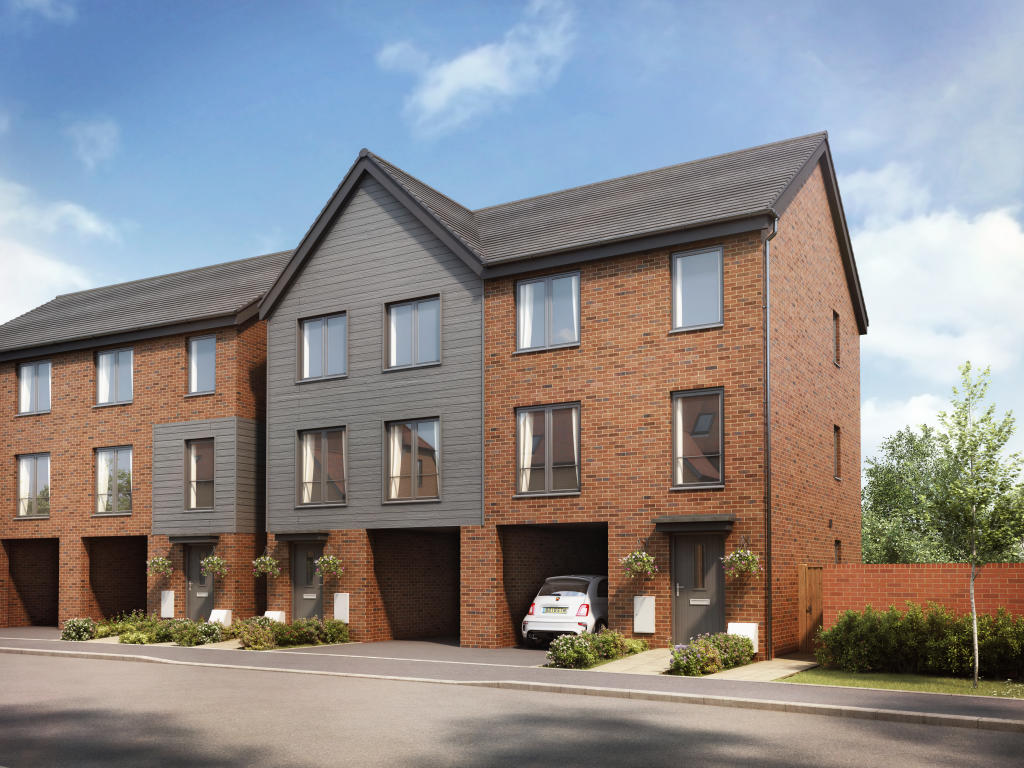
Embarking on the journey of building your home requires thorough planning and unwavering dedication. It is crucial to approach this endeavor with consideration as any oversights, in the planning phase could have financial implications.
Preparing for Your New Home Project
Before delving into the design and planning process of your home it is important to take the aspect into account. Building a home entails considerations as self build mortgages offer options compared to traditional mortgages. These specialized lenders often have their lending standards. May charge slightly higher interest rates.
Managing Your Finances (& Allocating for Unforeseen Costs)
Sticking to a defined budget is absolutely crucial as it can be easy to get carried with enthusiasm and overspend. It is always wise to set aside some funds as a safety net to account for any circumstances that may arise during the initial stages of construction. This additional financial cushion can make all the difference between completing your project or having to pause due, to funds.
Bringing Your Vision to Life
Every project starts with an idea whether its crafting your dream home or establishing a business venture. Take some time to contemplate what you envision for your build and carefully consider locations that align with your goals.
Finding and acquiring a piece of land can be quite challenging! When you're looking to purchase land it's important to check if it has planning permission, for a type of construction or if its undeveloped.
Land that already has planning permission tends to be more expensive due to the associated risks. However having approved plans doesn't guarantee that proposed changes will be accepted by the planning authorities.
On the hand land without planning permission may initially come at a cost. However obtaining the necessary development rights can pose its challenges. If you're unable to secure these rights the land becomes unsuitable for property development.
When evaluating a building plot there are factors you need to consider of its planning permission status. These include assessing the quality of the land itself and its accessibility. It's also important to take into account services such as road access and drainage facilities (though alternatives, like tanks and field drains can suffice). Additionally arranging for a gas supply (or considering heating oil or LPG as alternatives) and ensuring an electricity supply are considerations.
Lastly lets discuss telephone and internet connections shall we?
Designing Your New Home
Choosing your design team is crucial as this decision can greatly impact the success of your building project.The role of the design teams is to take your ideas and turn them into designs. They will also guide you through the planning process. Ensure that all regulations are met.
Choosing the Appropriate Building Contractor
As a homeowner having information, at hand will make you feel more confident when making decisions, about your project. It also helps building contractors in providing tenders. Once you have chosen a contractor having detailed construction drawings will make the process smoother and reduce the chances of charges arising from complications.
What are the Risks in Healthcare Construction Projects?
June 26, 2023
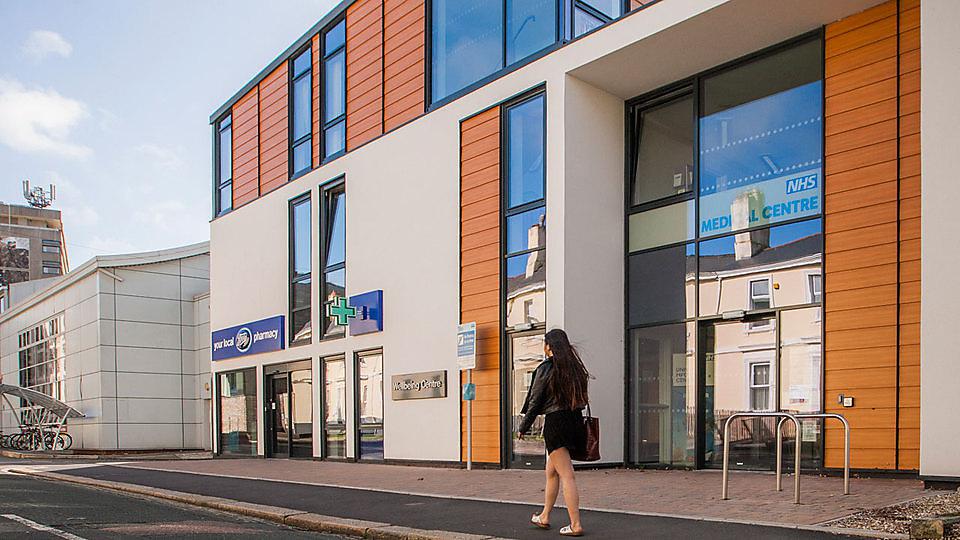
Healthcare construction comes with its set of risks and precautions that must be taken seriously. It is essential to understand these risks to ensure the safety of staff, patients and construction workers involved. In this discussion we will explore the five risks typically encountered during hospital construction projects. How New Build Contractors effectively manage them.
Risks, in Healthcare Construction
1. Asbestos Concerns
One significant risk in healthcare construction is the presence of asbestos. Asbestos was extensively used in buildings between the 1950s and 80s making it a potential hazard during hospital updates that aim to incorporate advancements. To address this concern proactively we strongly recommend conducting a Research & Development (R&D) survey before commencing any construction work. Allocating part of the budget towards ensuring controlled removal of asbestos is crucial for hospital administrators.
2. Access Challenges
Hospitals are places where emergencies can arise at any moment. Therefore it is vital to maintain corridors during construction projects. To achieve this objective we meticulously plan specific site routes in advance of the project start date to separate construction workers from the day to day operations of the hospital. Additionally careful consideration is given to transporting machinery to designated floors by requesting access to lifts for efficient movement, without obstructing stairwells.
3. Patient Well being
At New Build Contractors ensuring patient comfort remains our priority.
We prioritize minimizing disturbances during times and work closely with hospital staff to ensure coordination. In case of need we also consider relocating patients to quieter areas.
4. Safeguarding Hospital Equipment
The hospital equipment, worth millions is carefully handled and installed by our construction team to prevent any damage.
5. Controlling Dust & Infection
Additionally we take care in reducing the risk of infection spread during construction. For example certain fungi, like Aspergillus can be transmitted through dust and air posing a threat to patients. We utilize tools such, as air filters and portable containment units while maintaining construction areas.
By following these measures New Build Contractors guarantee the efficient completion of healthcare construction projects.
Factors to Consider When Constructing a Retail Building
June 26, 2023

Constructing a building requires planning and decision making to ensure success. Each project is unique. There are important factors to consider.
Location
Choosing the location is crucial, for a business. It's important to find a place that's easily accessible with signage and high visibility. Foot traffic is also key as proximity to amenities, parking availability and complementary businesses.
Ordinances and Zoning
Before starting construction it is vital to comply with all construction laws and regulations. This involves obtaining the permits and approvals from government agencies to avoid any legal issues in the future.
Budget
The project budget plays a role in every aspect of retail building construction. It includes expenses for land acquisition, design and planning construction materials labor costs, equipment fees as some contingency funds for unexpected expenses. Having a budget plan is essential to stay within constraints.
Design and Layout
A retail space needs a design that provides a shopping environment while staying true, to the retailers brand image. This involves considering merchandise display areas, customer flow patterns, accessibility options, storage solutions and operational efficiency.
Sustainability
It is becoming increasingly important to incorporate eco practices in retail construction. This involves using building materials implementing energy efficient systems and even considering solar panels or green roofs. By adopting building practices we can minimize our impact and achieve long term cost savings.
Integration of Technology
In the age of buildings it is crucial to integrate technology into construction. This can include security systems, automated controls, for heating, ventilation and air conditioning (HVAC) digital signage, well as inventory management or point of sale systems. By incorporating technology into our construction plans we can boost efficiency enhance the shopping experience for customers and drive business growth.
To summarize an evaluation of these factors and a strong focus on meeting the needs of retailers and their customers are essential, for constructing a retail building.
Key Steps to Remember When Moving into Your New Home
June 21, 2023
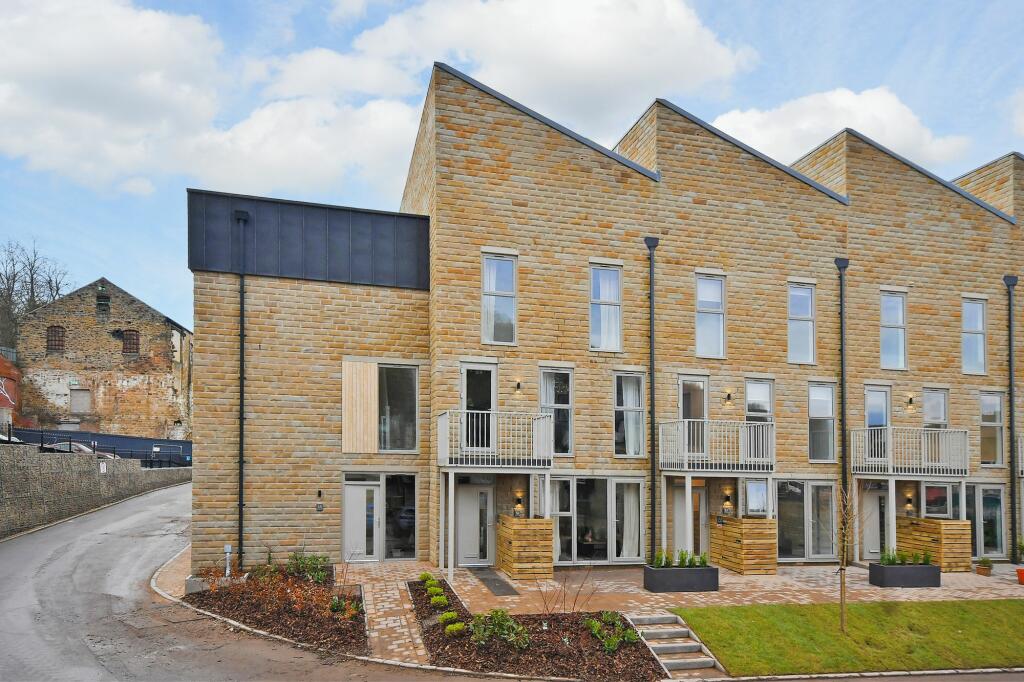
Moving to a new house can be a daunting task, but with careful planning and execution, it can be a seamless process. As professionals in building homes in Bedfordshire, we, at New Build Contractors, have helped numerous homeowners settle into their new homes and we know the importance of keeping certain steps in mind.
One of the most overlooked tasks when moving is creating a moving calendar. This simple tool can help you keep track of all the tasks that need to be completed before and after the move. It's important to include all important dates, such as the day you'll be moving in, dates when you'll need to take time off from work when you should record meter readings, dates for coordinating with friends or family who can help with pets or children, and the activation date for broadband services at your new home. By having a clear timeline, you'll be able to manage your time more effectively and reduce stress during the move.
Another important step when moving to a new house is decluttering and simplifying your possessions. Take the opportunity to go through your belongings and decide which items you want to keep, donate, or discard. This will not only make packing easier but also help you start fresh in your new home. Additionally, it's important to pack your essential items separately and make sure they are clearly labeled. These items may include toiletries, a change of clothes, important documents, and any medications you may need.
In conclusion, moving to a new house can be a challenging process, but with careful planning and organization, it can be a smooth transition. By creating a moving calendar, decluttering your possessions, and packing your essential items separately, you'll be well on your way to settling into your new home. As experts in building homes in Bedfordshire, we're here to help you every step of the way.
Moving to a new residence can be an exciting and stressful experience all at once. With so many details to consider, it's important to stay organized and plan ahead to avoid any potential hiccups along the way.
One of the first things you'll want to do when preparing for your move is to gather quotes from various moving companies. Take the time to compare prices and read reviews from other customers to ensure you choose a reputable company that will handle your belongings with care.
Another important consideration is parking for the moving van. It's a good idea to check with your new residence to see if there are any specific regulations or restrictions that you need to be aware of. You'll also want to inform your neighbors of your plans to relocate, as this can help minimize any disruptions or potential conflicts.
One common mistake that many people make during a move is forgetting to update their address. To avoid missing any important mail or documents, create a list of all the places where you receive mail and ensure that your address is redirected properly. This includes notifying your healthcare providers, schools, workplaces, and any other important entities of your address change.
It's always a good idea to have a backup plan in case things don't go as planned. Consider arranging for a babysitter or temporary storage in case there are any delays with your move-in date. This can help reduce stress and ensure that your move goes as smoothly as possible.
Finally, amidst the chaos of the moving process, it's important to take some time to appreciate your new home. At New Build Contractors, we understand that a house is more than just a building - it's a place where you can truly feel comfortable and at ease. That's why our goal is not just to construct houses, but to create homes that you'll love for years to come.
How should I plan for my commercial building construction?
June 18, 2023
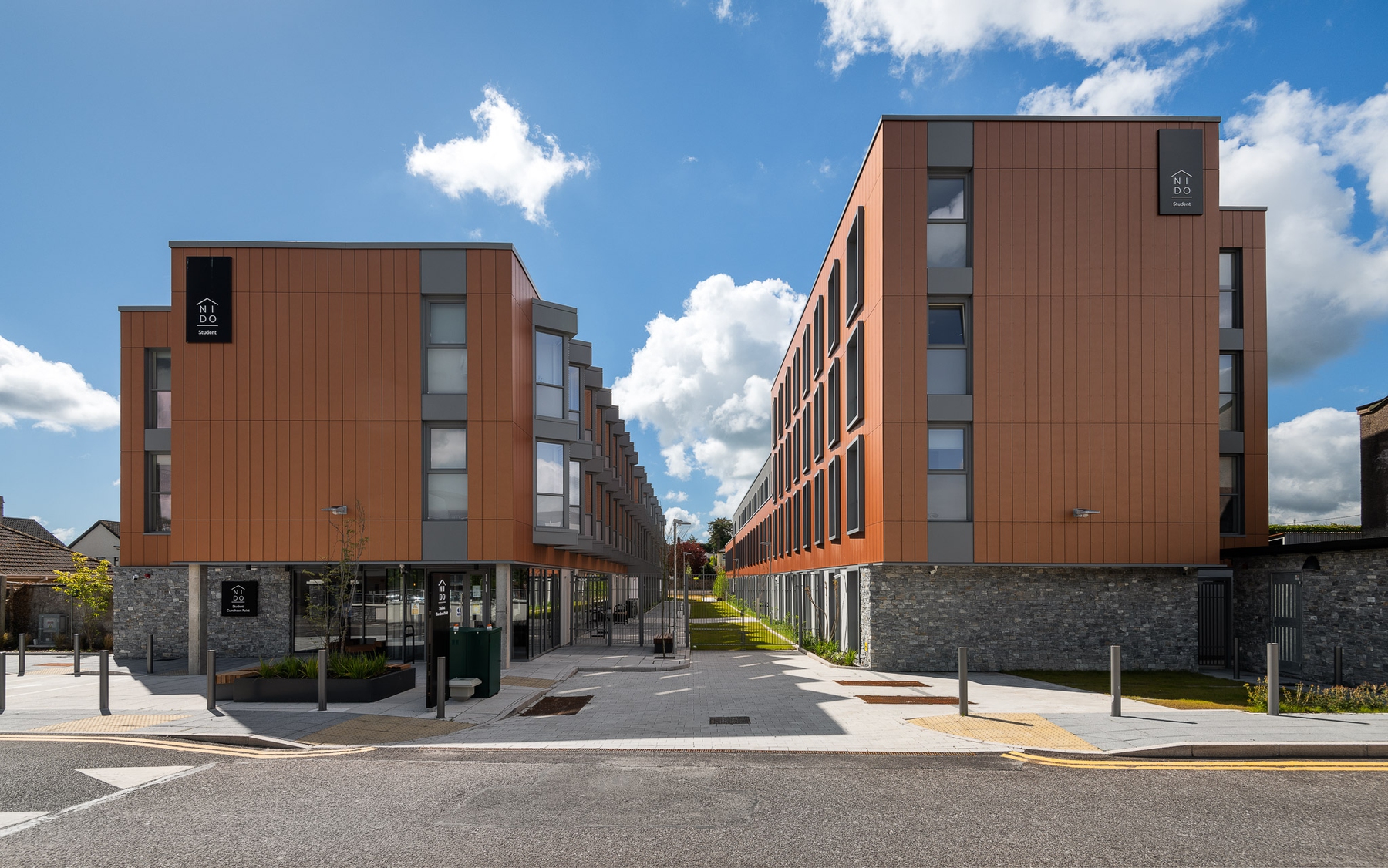
Planning Your Commercial Building Construction with New Build Contractors in London
Are you thinking about constructing a building, in London? Navigating the world of construction can feel overwhelming. With proper planning and the assistance of experienced new build contractors in London your vision can become a stunning reality.
Here is a guide to help you plan your building construction in the UK.
1. Understand Your Business Requirements
Every business has infrastructure needs. Before embarking on a construction project it's essential to have an understanding of;
Space Requirements; Determine how much square footage you need for office space, manufacturing areas or retail spaces.
Future Growth; Plan for potential expansions or changes in your business operations.
Location Considerations; Evaluate how location will impact your business operations, visibility and accessibility for both customers and employees.
2. Assemble Your Dream Team
Once you have identified your requirements it's time to bring together a team of professionals who will turn your vision into reality;
Architects; Collaborate with architects who can transform your ideas into designs.
Engineers; Engage electrical, mechanical and civil engineers to handle considerations.
New Build Contractors in London; Partner with reliable contractors who will oversee the construction process with precision and ensure timely completion while maintaining high quality standards.
By following these steps and working closely with experts in the field you can successfully. Execute the construction of your building, in London.
Securing Financing
When it comes to construction securing financing is a step that requires careful planning. Take the time to evaluate options such, as;
Bank Loans; Traditional lenders can provide construction loans although they might require documentation and collateral.
Investors; Private investors or real estate investment firms could be sources of financing.
Leasing; Depending on the circumstances leasing the constructed property could prove to be a viable strategy.
Design and Approvals
Once you have assembled your team and secured financing it's time to focus on;
Design Development; Collaborate with your architect and engineers to finalize the design of the building.
Permitting; As contractors specializing in builds in London we can assist you throughout the intricate process of obtaining the necessary permits and approvals from city authorities.
Construction and Oversight
With planning and approvals in place your commercial construction project can begin. Regular site visits, coordination between teams, quality checks and adherence to timelines will contribute to a seamless construction process.
Final. Occupancy
Upon completion of construction;
Final Inspection; City authorities will conduct an inspection to ensure that the building meets safety standards and is ready, for occupation.
Occupancy; Once you have obtained a certificate of occupancy you are all set to move into your brand building!Why wait? Start planning your construction project today and set the path towards a commercial building. It all begins with planning. Selecting the ideal new build contractors, in London.
Building a New Build House in the UK: A Guide.
April 24, 2023
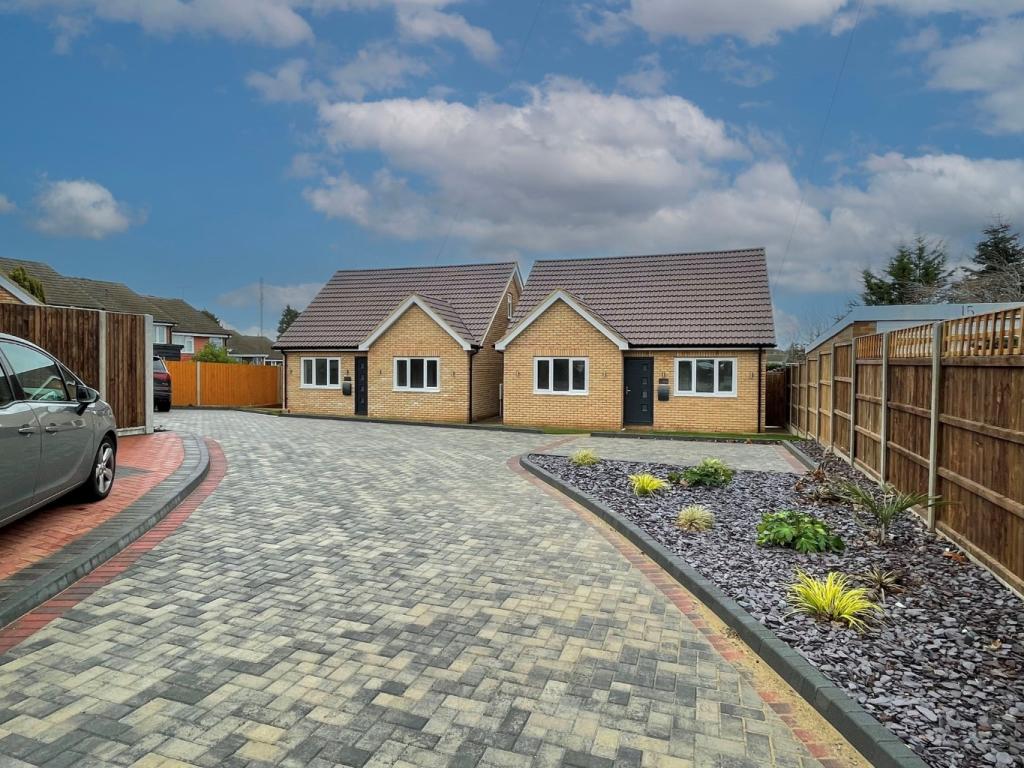
Constructing a house is an investment that involves stages and complexities. One crucial aspect to consider when building a house is the time required to complete the project. In the UK the construction timeline depends on factors such, as the size, intricacy, location, and chosen construction method. This blog delves into the thought process behind estimating house-building timelines in the UK providing an overview of the duration for each step involved in the procedure.
How long does it usually take?
On average building a house in the UK typically takes around 7 12 months. However, it's important to note that factors like location, size of the house complexity of design, and construction method can impact this timeline. Rural locations might require more time due to resource accessibility while urban areas often benefit from better infrastructure. Custom-designed homes involve planning and design work; thus they usually span between 9 to 12 months in areas or 4 to 6 months, in urban settings. Nonetheless, unexpected circumstances and resource availability can also influence project timelines.
What are the steps involved? Detailed breakdown
Site Preparation - The process of building a house begins with site preparation once you have acquired your plot and completed all planning and preparations.
Clearing Ground - First, the site needs to be cleared of waste and vegetation and tradespeoples facilities and services should be set up. Groundworkers are responsible, for creating access to the site. They clear the area of soil which is then stacked for use. A site hut is equipped with drawings and safety equipment installed. Additionally, a toilet and a secure lock up or lorry container are installed.
Plumbing - The water board brings the water supply to the boundary connecting it to a stopcock. A plumber then connects the water standpipe. Once these initial preparations are completed a surveyor marks out the building location on the cleared site adjusting lines and profiles as needed away from construction.
Mixer-Station -To facilitate construction work there is a designated mixer station near piles of bricks, blocks, cement, and sand. The process of preparing the house site typically takes 4 to 6 weeks and can vary based on factors such as plot size, location, and complexity. This step is crucial in establishing a foundation since rushing through it may result in mistakes or delays in later stages.
Foundations - The next step involves laying foundations which plays a vital role in home construction. This process begins with excavation work followed by reinforcing bars or mesh installation within the foundation structure. Ducts are also incorporated into the foundation for service entries
Concrete Footings - Once prepared sufficiently concrete footings are leveled before building up foundation blockwork until reaching the damp-proof course level. Air vents that have been cranked for seating along with drainage exit lintels and proof courses are subsequently added.
Finally, any voids, within this foundation structure are filled with lean mix concrete to ensure stability.
The initial phase of construction, in the UK, typically lasts 4 to 6 weeks and heavily relies on establishing a strong foundation.
Structural Construction Phase - Moving on to the structural construction stage in the process. It is important to have the building inspector sign off once the structural work is completed. The groundworkers will dig service trenches and install utility lines, such as stopcock/meter lines and ducts. Each section will have floor beams, drainage, and vent pipes as blocks. Ventilator grilles, coursing blocks, and grout will be carefully installed. Before proceeding with the structure there will be a building control/warranty assessment arranged. Templates for windows and doors will be put into place. The first set of scaffolding is required for work to progress smoothly.
Brickwork - Bricklayers will focus on chimneys, lintels, and brickwork for the structure part. They'll also take care of installing fireplace lintels and establishing flue liners as they proceed with their work. Plumbers will reroute the water supply to its designated stopcock position. Electricians from service providers will come in to install meters and connect them accordingly.
Carpentry - Continuing with construction tasks bricklayers will concentrate on building ends and chimneys while carpenters work on constructing end trusses using templates provided. Plumbers are responsible for lead flashing trays, and skirts around the chimney area along with installing vent pipes and flashing skirts that pass through the roof.
As we approach the completion of this step in construction, bricklayers carry out touches by topping out the chimney pot followed by pointing towards chimney flashings.
On average, in the UK context, this particular stage can take around 16 weeks to complete.
The timeframe, for completing the project will vary depending on its size and complexity. To secure the scaffolding we use patented wall plate straps while scarfing, bedding, and tying it down up to the lift. In the UK constructing the superstructure typically takes around three to four months.
Roofing - Moving on to adding the roof is a step in building a home as it brings everything together. Our carpenters carefully secure roof trusses onto the wallplate. They ensure all binders and bracing are properly fixed at node points. Additionally, they construct dormers and install fascia and soffit elements. Any necessary ventilation grilles or strips are also added by our team. Our skilled roofers handle tasks such as cutting and laying underclocking to verges along with laying tiles, slates, ridge/hip tiles, valley tiles, fiberglass, or lead valleys. The plumber takes care of dressing down flashings and skirtings while our decorators paint or stain the fascias, soffits, and barges as needed. This phase typically takes around four to six weeks on average in the UK. Can vary based on roof size and complexity.
First Fix - Moving into the next step of building a home involves completing internal and external tasks known as the first fix stage and fittings process. This includes fixing guttering systems in place along, with joinery components. External rendering work is also carried out during this stage before taking down the scaffolding structure. Plumbers then proceed with downpipes where necessary.
They connect them to drainage upstands or gullies. Carpenters who work on the stages install door frames, partitions, and window sills. This phase usually takes around 6 to 8 weeks on average in the UK. During this time the first fix stage involves installing plumbing systems. Plumbers are responsible, for laying down flooring membranes, insulation, underfloor heating loops, and plumbing for / water and waste disposal. They also install gas pipes and underfloor heating pipes connected to manifolds and outlets. Across the UK this stage typically takes 4 to 6 weeks.
Drainage Systems - The next step in home construction is work which includes drainage systems, driveways, and pathways. Groundworkers dig trenches for drainage ditches. Lay drains with slopes. Once approved by the building inspector the drains are covered with pea shingle for support. The trenches are then filled back up. Carpenters boxings and noggings to prepare for plastering while bricklayers construct fireplaces and hearths.
Gas Installations - In addition, to that the gas meter is connected while plumbers collaborate with electricians regarding crossbonding and earthing requirements. This entire process generally takes around 6 8 weeks to complete.
Staircase -Moving on to work which involves installing the staircase—a significant part of completing the interior of a house—the carpenter will carefully fit in place the main staircase while ensuring its protection. Plasterers will secure ceilings in place.
Plastering - For the construction process all the walls, including blockwork walls, will be covered with plasterboard. The study walls and pipe boxings will also have plasterboard attached. We will ensure that all joints and angles are filled and secured with tape, where different materials meet we will use mesh to join them. To prevent any leakage or gaps all joinery work will be sealed both internally and externally using mastic. Skilled plasterers will then apply a skim coat to give a finish to all the walls and ceilings. The decorator's job is to paint or treat the backs of skirting boards and architraves. Additionally during this stage roofing insulation will be installed well. The duration of this step can vary depending on factors. Typically takes around 8 to 12 weeks to complete in the UK.
Second Fix - Moving on to the step of building a home, which involves interior tasks such, as second fix carpentry, plumbing, and electrical work. Skirting boards, architraves (door frames) treads of the staircase balustrading (railing) handrails, timber floors, and ceramic tiles are installed at this stage. Carpenters or specialized suppliers may also be build custom made furniture for bedrooms and bathrooms as per design plans. Kitchen units are put in place during this phase too.
The second fix stage primarily focuses on connecting everything by wiring up components like boilers along with plumbing connections such as sink units and sanitaryware installations. It also includes connecting heating loops to manifold radiators as well as towel rails for heating purposes while ensuring proper cross-bonding and earthing for safety.
Please note that these timelines may vary based on circumstances but generally follow this sequence, in home construction projects in the UK. This particular step usually requires around 4 to 8 weeks in the UK.
Decoration - When it comes to home decor there are tasks that need attention once the construction is completed. These tasks include working on the worktops cleaning and painting. In addition, the kitchen and utility areas have wall tiles while the internal timber is sanded and painted. After filling any gaps tilers come in to install wall and backsplash tiles. Another task, during this step is installing a water meter. The duration of this step depends on the size of the house. It typically takes 2-4 weeks.
Landscaping - Another aspect of beautifying a property involves landscaping work. This includes leveling the ground adding topsoil constructing driveways installing patio slabs creating dwarf or decorative walls and preparing lawn sections for sowing grass seeds or laying turf. The length of time required for this step depends on the scope of the landscaping project. This can range from weeks to a few months in the UK.
What are the benefits of buying a new build home?
April 15, 2023
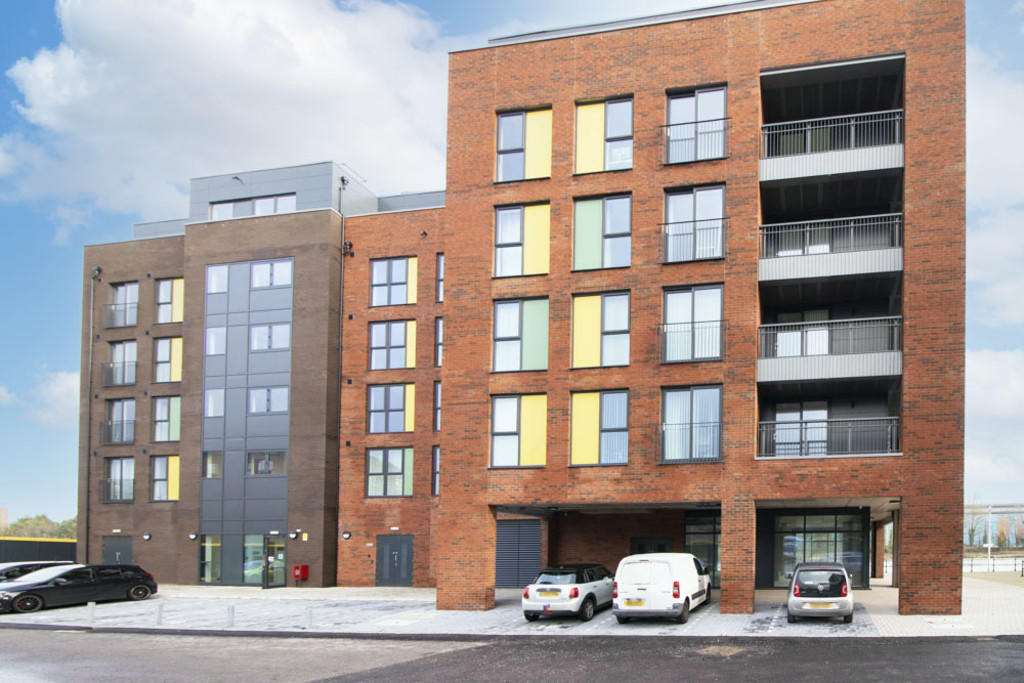
When you decide to buy a newly constructed home from us, we prioritize your individuality and ensure that your house reflects your unique preferences. Our skilled builders will collaborate with you to create a space that is tailored to your liking, making every inch of your home feel special and inviting. We also offer a range of design options, allowing you to choose distinctive features that align with your vision for your dream home.
Our team is well-equipped to bring your vision to life, whether you desire a kitchen with modern appliances or the timeless elegance of hardwood flooring throughout. We understand that a home should be tailored to fit the owner's lifestyle, whether that means accommodating a growing family or creating an entertainment space. By working together, we can create a residence that not only meets but exceeds your expectations, reflecting your unique identity. At New Build Contractors, we value craftsmanship and the lasting value of construction. Our newly built properties prioritize the use of high-quality materials, ensuring durability and resilience. We also stay up-to-date with current construction standards to ensure safety and efficiency. Join us on this journey and trust us to build a home that stands the test of time, reducing the need for maintenance.
Investing in a newly constructed home offers more than just a beautiful living space. It provides peace of mind, knowing that your home is built with the latest construction techniques and materials, reducing the need for future repairs or renovations.
With New Build Contractors, you can expect premium quality and exceptional craftsmanship that sets your home apart. We are dedicated to creating residences that exceed expectations.
Our commitment to the environment is reflected in our eco-friendly approach. We use sustainable materials to minimize our carbon footprint, ensuring a greener future for all.
Not only do our homes prioritize sustainability, but they also incorporate cutting-edge systems for enhanced comfort. From advanced heating and cooling to top-of-the-line insulation, you'll experience energy efficiency that translates into both comfort and significant savings on your bills.
Experience the sustainability of our homes and enjoy their efficient and inviting atmosphere, all while saving on energy costs. This benefits both your finances and the environment. With New Build Contractors, you can step into a home that combines innovation and conservation. Live in luxury while also nurturing the environment, and embrace a future where every aspect of your home promotes eco-efficiency.
Find peace of mind with our decade-long warranty. At New Build Contractors, we take pride in every home we create, demonstrating our commitment to excellence and ensuring your peace of mind. We meticulously construct each property to meet the high building standards set by the National House Building Council (NHBC), known for its gold standard in home construction. Our homes are not only built with quality in mind but are also backed by a 10-year NHBC warranty and insurance (or equivalent), providing tranquility for years to come.
Discover a world of tailored choices with our newly built developments. By getting involved, you unlock a range of options. Whether it's a sun-soaked garden for summer gatherings or a top-floor suite with breathtaking views, being proactive is essential. Secure your interest promptly and explore the various selections we have available.
Join us on a remarkable adventure where opulence and tranquility converge.
No Seller Chain
When you decide to purchase a home from New Build Contractors, you are entering a realm of certainty and serenity. Here's why:
Bid Farewell to Seller Chain Concerns: Our new builds offer a distinct advantage by eliminating the uncertainty that comes with dealing with a seller chain. This simplifies your buying experience and also enhances the appeal of your current property to potential buyers.
A Seamless Buying Expedition: When you choose to invest in one of our developments, you can anticipate a predefined timeline for completion. Typically, buyers pay a reservation fee and then an additional 10% within 28 days of exchanging contracts. The remaining balance is due upon the completion of construction.
Convenience and Assurance
Say goodbye to worries about schedules and potential setbacks. Our meticulously planned timeline ensures that you are kept informed at every stage of the process. When you select a development, you begin by committing to a reservation fee. Within 28 days, you proceed with a 10% payment upon exchanging contracts. Finally, upon completion of the project, you settle the remaining balance.
Experience an unparalleled home-buying journey with New Build Contractors, where transparency and efficiency are seamlessly intertwined.
Questions to ask When Buying a New Home
April 14, 2023

What is the anticipated timeline for the completion of your home's construction? It is crucial to have this information to coordinate with your local builder and ensure that it aligns with your schedule and plans. Additionally, understanding the complexity of your project can assist the contractor in making any necessary arrangements for accommodations.
Are there any costs or fees associated with purchasing the property?
When purchasing a newly constructed home, there may be expenses such as stamp duty, legal fees, and land registry fees. Being aware of these financial obligations ahead of time will allow you to plan and budget accordingly.
Stamp duty is a tax that is applied to property purchases and is determined by the price of the property. In England, the amount of stamp duty owed is calculated using a sliding scale based on the purchase price. However, Scotland and Wales have their methods of calculating this tax.
Legal expenses, such as a solicitor or conveyancer fees, are necessary for handling various aspects of the purchase process. These fees cover tasks such as conducting searches and managing contracts to facilitate the transfer of property ownership.
Land registry fees are payments made to the government to register the property under your name.
Government charges are applied when you register a property in your name, establishing your ownership and protecting your rights.
Do the houses come with any warranties or guarantees?
Typically, newly built constructed homes come with warranties that cover defects and issues resulting from substandard workmanship or materials used during construction. The specifics of the warranty may vary depending on the builder and type of home. To understand the coverage and duration, it's important to review the warranty. This knowledge provides peace of mind and protection against potential problems.
What is the process for addressing repairs or resolving issues after buying a home?
Knowing the contractor's repair process can help anticipate and address any concerns that may arise. The warranty provider may send someone to assess the situation and determine an appropriate solution, which may involve repairing the affected area.
What choices are available for upgrades and customization?
By familiarizing yourself with the available upgrade options, you can personalize your property to suit your preferences. There are various finishes and materials to choose from, offering opportunities for customization.
Are there any plans or arrangements in place to handle construction delays or problems that may arise? Construction delays or problems can affect the completion timeline of a home and potentially cause inconvenience or additional expenses for buyers. Knowing the contingency plan will ensure that any delays or issues are quickly resolved to minimize their impact on buyers.
How is the house constructed?
Is it made with brick and blockwork or timber frames? Knowing the construction method of a new house is important as it can impact its quality, durability, and resale value. Brick and blockwork construction is often seen as traditional and long-lasting, while timber frame construction offers benefits such as energy efficiency and design flexibility. Understanding the materials and building procedures used in the development allows buyers to make informed decisions that align with their preferences and needs.
Another important factor to consider is whether the property is leasehold or freehold. Each type of ownership comes with different rights and responsibilities for a newly built property. Leasehold properties may have charges and limitations that buyers should carefully review in their lease terms to fully understand their obligations towards the property owner. On the other hand, freehold properties grant ownership of both the property itself and the land it is built on.
It is also worth exploring if there are any covenants in place. These legal agreements impose restrictions on how buyers can use their property, including limitations on building or renovating based on certain standards.
Before making a purchase, it is essential to have a clear understanding of any restrictions or obligations that may be enforced.
Britain's Construction Industry; Driving Growth and Innovation
March 10, 2023
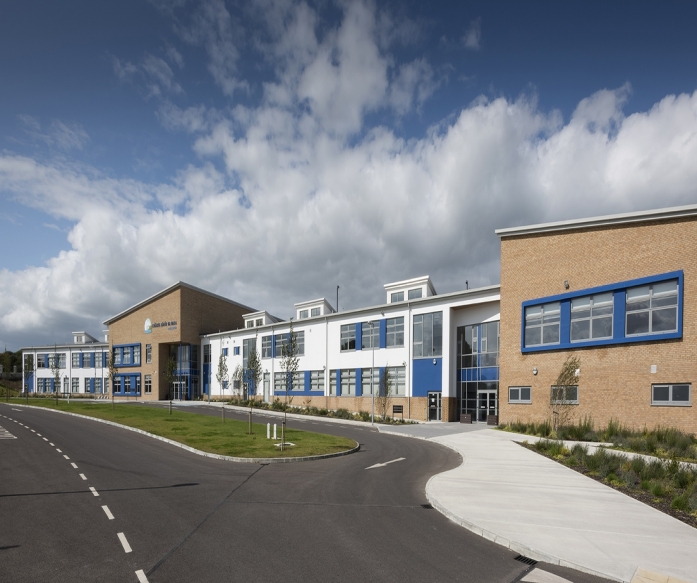
The construction industry has been a component of Britain's landscape, for a long time. It reflects the nation's heritage and its continuous drive for innovation and progress. In this overview, we will delve into the state of construction in Britain exploring its impact on the economy as well as the challenges and opportunities that lie ahead.
A Closer Look at Britain's Construction Sector
The construction industry plays a role in the UK economy contributing 6% to the country's GDP. It stands out as one of the sectors with over 2 million employees thus serving as a source of employment opportunities. The realm of construction in Britain covers a range of projects encompassing housing, commercial developments, and infrastructure initiatives.
Prominent Trends and Advancements
Several notable trends define Britain's construction industry;
Sustainability; There is an increasing emphasis on building practices and energy efficiency within the sector.
Technological Advancements; The industry is embracing tools such as Building Information Modelling (BIM) to modernize construction processes.
Urban Development; Demand, for construction is being fueled by urbanization city growth and regeneration projects.
The Construction Economy Existing Challenges
Despite having its strengths the industry encounters an obstacle;
Shortage of Workers; Insufficient skilled labor, in specific trades can limit growth.
Compliance with Regulations; Navigating through building regulations and standards.
Economic Uncertainty; Fluctuations in the economy can affect construction investments and development.
Government Initiatives and Support
The British government acknowledges the significance of the construction industry. Has implemented measures to provide support;
Investment in Infrastructure; Substantial funding is allocated to transportation, energy, and other infrastructure projects.
Skills Development; Initiatives aimed at training workers and enhancing skills.
Promoting Building Practices; Regulations and incentives designed to encourage friendly construction.
The Future of Britain's Construction Economy
The future appears promising with opportunities for growth and innovation;
Global Leadership; The construction industry in Britain is recognized as a leader in areas such as engineering and sustainability.
Adaptability; The industry's ability to adapt to changing circumstances while fostering innovation ensures its relevance.
A Foundation, for Economic Growth; Through the creation of homes, workplaces, and infrastructure construction continues to serve as a cornerstone of Britain's economy. In conclusion, the construction industry, in Britain represents more than bricks and mortar. It symbolizes the nation's history, creativity, and ambition. Despite facing challenges the industry remains robust and adaptable pointing towards a future brimming with potential.
Regardless of whether you're a homeowner, business leader or policy maker Britain's construction sector has an impact on all of us. It is an integral part of our country's fabric – always constructing, innovating, and contributing to a livelier Britain.
The construction economy in Britain is a topic that we have attempted to present in a comprehensive manner. If you require information, on aspects or wish to include particular elements please don't hesitate to let us know!
What is a Building Permit?
February 12, 2023
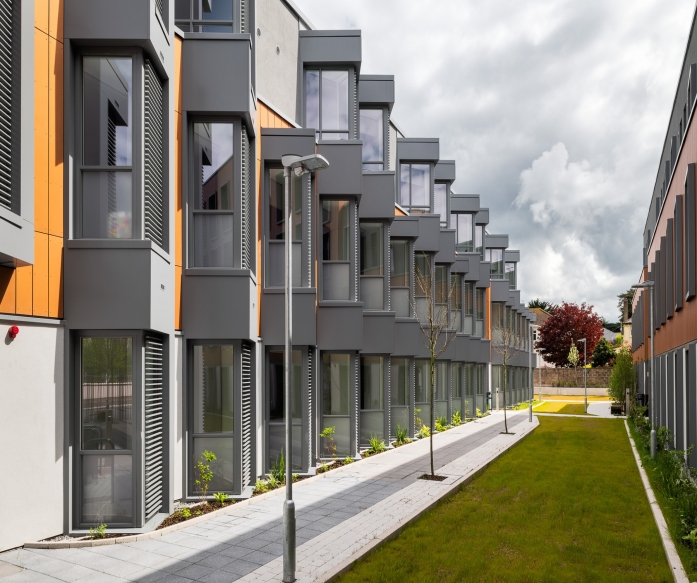
Building permits are an essential part of any construction, renovation, or demolition project. They serve as a legal requirement that property owners must obtain before starting any work on their property. The primary purpose of building permits is to ensure that the proposed work aligns with building codes, zoning laws, and other regulations within the jurisdiction. This is important, as it helps to maintain safety standards, protect public health, and ensure that the construction meets quality standards.
Building permits are essential for ensuring safety compliance. These permits guarantee that the construction adheres to building codes that are specifically designed to ensure safety and protect public health. Without these permits, property owners may be at risk of violating local laws and regulations, which could result in penalties, fines, or even legal action.
Obtaining a building permit also provides legal protection for property owners. It helps protect property owners from complications that may arise due to non-compliance with local laws and regulations. This is important, as it reduces the risk of liability and protects property owners from lawsuits that may arise from construction-related accidents or injuries.
In addition to safety compliance and legal protection, building permits also help to maintain quality standards. The permit process involves inspections to ensure that the construction meets quality standards and is carried out by professionals. This ensures that the construction is built to last and meets the needs of the property owner.
Keeping records of building permits can also increase the resale value of a property. This is because it provides evidence of compliance with building standards, which can be used to assure potential buyers of the safety and quality of the property. This can make it easier to sell the property and can even increase its value.
While smaller enhancements, such as touch-ups or basic fixes, typically don't necessitate a permit, it's always wise to verify with your local authorities for confirmation. This will ensure that you are complying with all local laws and regulations and will help to protect you from any potential legal issues that may arise.
In conclusion, building permits are an essential part of any construction, renovation, or demolition project. They serve as a legal requirement that property owners must obtain before starting any work on their property. Building permits help ensure safety compliance, provide legal protection, maintain quality standards, and even enhance property value. It's always wise to verify with your local authorities to ensure that you are complying with all local laws and regulations.
The process of obtaining a building permit is an essential step in any construction project. It serves as a legal document that authorizes the construction of a building or structure. A building permit ensures that the construction project meets all the safety standards, codes, and regulations set by the local authorities. It also helps to protect the property owner from potential legal liabilities.
The first step in obtaining a building permit is plan preparation. This involves the submission of construction plans that include drawings, site plans, and any other relevant documents. The plans must be detailed and precise to ensure that the construction project is completed according to the specifications. The application must also include the payment of the required fees.
Once the application has been submitted, the local authorities will conduct a review process. This involves assessing the plans to ensure that they comply with building codes, zoning laws, and other relevant regulations. This review process can take several weeks, depending on the complexity of the project and the workload of the local authorities.
During the construction phase, periodic inspections may be conducted to ensure that the work aligns with the approved plans. These inspections are crucial in ensuring that the construction project is completed safely and effectively. They also help to identify any potential issues that may arise during the construction process.
After all the inspections have been completed, the final approval is granted. This approval can be in the form of a certificate of occupancy or final approval. This document signifies that the construction project has been completed according to the approved plans and meets all the safety standards and regulations set by the local authorities.
In conclusion, obtaining a building permit is not merely a formality; it plays a crucial role in responsible construction and property ownership. It ensures that the construction project meets all the safety standards, codes, and regulations set by the local authorities. It also helps to protect the property owner from potential legal liabilities. Therefore, it is essential to consult with your local authorities for information regarding building permits in your area.
When embarking on a construction project, it is essential to understand and comply with the building permit process. The process ensures that the building project follows safety standards, building codes, and zoning regulations. It also guarantees that the construction work is carried out in a way that aligns with the interests of the community.
Compliance with the building permit process demonstrates your commitment to professionalism, honesty, and the welfare of the community in which your project is located. It is a way of showing that you are responsible and accountable for your actions as a builder or contractor.
However, it is worth noting that the procedures, regulations, and requirements for obtaining building permits can vary significantly depending on your country, region, or even city. Therefore, it is essential to familiarize yourself with the specific rules and regulations that apply to your project. This ensures that you are compliant with the requirements of the authorities and that you avoid any potential legal or financial penalties that may arise from non-compliance.
To fully grasp the applicable rules for your project, it is always advisable to seek guidance from building departments or professionals in your area. These experts can provide you with valuable insights into the permit application process and help you navigate the complexities of local building regulations.
In conclusion, adhering to the building permit process is critical to the success of any construction project. It not only ensures compliance with safety standards and regulations but also demonstrates your commitment to professionalism, honesty, and the welfare of the community. By seeking guidance from local building departments or professionals, you can ensure that your project is compliant with all the necessary regulations and avoid any potential legal or financial penalties.
What are the Stages of Construction Project Management?
January 30, 2023
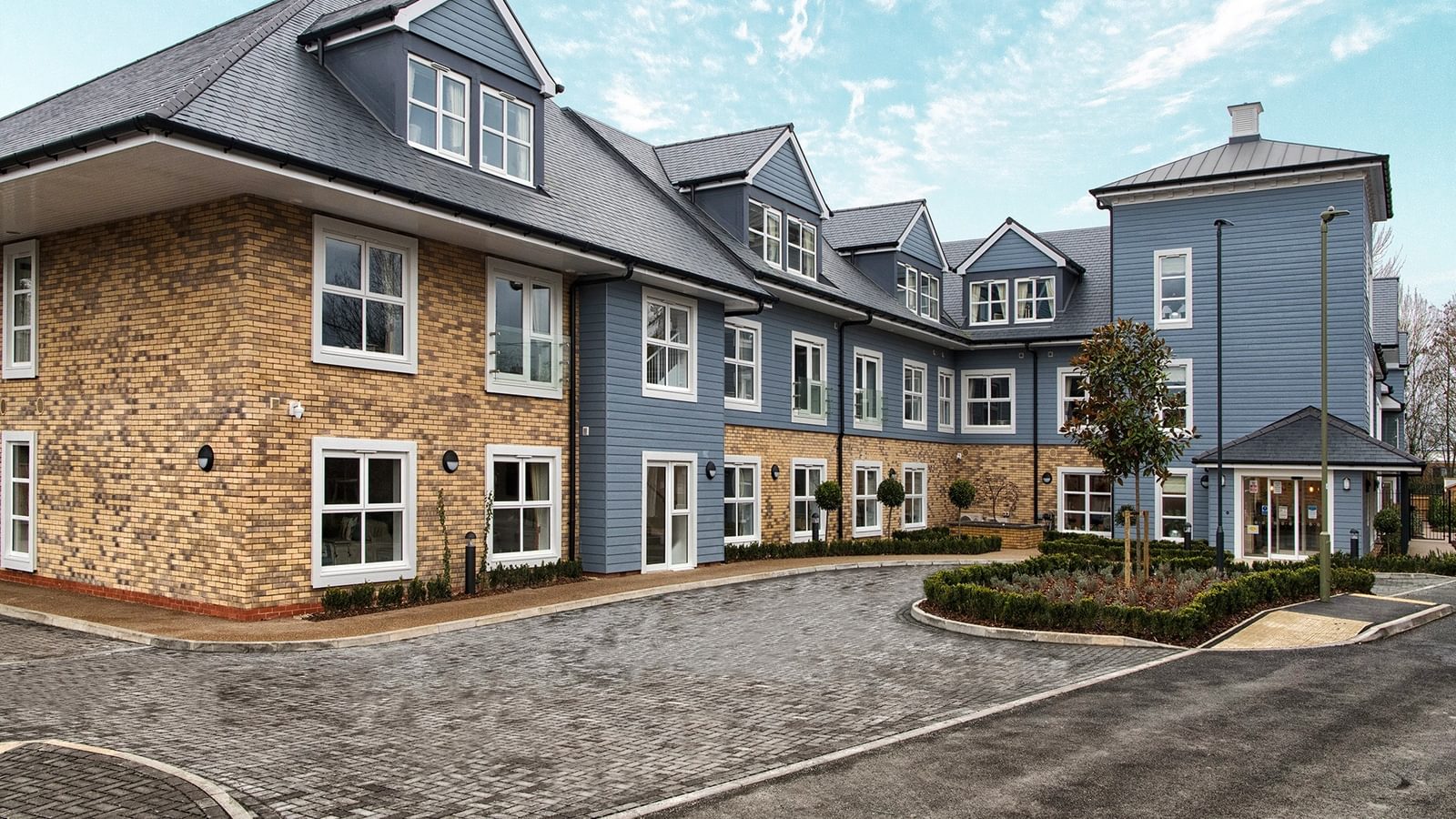
Construction projects are a breed of their own. Each one is distinct, with different participants, varying conditions, and unique requirements. However, amidst these differences, the phases of a construction project are remarkably similar.
In general, these phases progress in a linear fashion along a timeline. Let us delve into the six primary phases of construction project management that are common to most project life cycles.
1. Initiating the project
The construction project's life cycle commences with its design. During this phase, the owner lays the foundation for constructing the project. However, there are instances where, after careful consideration, the owner may discover that the project is not feasible.
Creating a business case
Regardless of whether it is a towering office building or a modest housing project, owners must always establish a business case for their endeavor. In this part of the design phase, the owner envisions how the property will be utilized and the financial benefits associated with that use.
Conducting a feasibility analysis
The feasibility study serves to either convince the owner that the project is possible, highlight areas requiring adjustments or deem it unfeasible. During this stage of the design phase, the owner takes into account various variables, including land usage and construction costs, while refining the optimal approach.
Defining the project's boundaries
During the scoping phase, the project owner collaborates closely with architects, engineers, and occasionally contractors to determine the size and features of the project. The aim is to align the final outcome of the project with its intended use upon completion, while also considering future potential uses. In this phase, the design team creates all the necessary drawings and specifications for construction.
2. Acquiring the necessary resources
Once the project plans are finalized, the owner proceeds to the next phase. In this second stage of the construction project, the objective is to gather the team that will carry out the construction.
Choosing the most suitable approach
One crucial factor in any project is the chosen delivery method. In the past, owners mostly opted for the design-bid-build approach. However, nowadays, there is an increasing trend towards design-build and integrated project delivery methods. These collaborative approaches result in cost savings and improved project outcomes. The owner selects the delivery method that will best align with the project's objectives.
Selecting the participants
To engage project participants, the owner often invites contractors or construction managers to bid on the project. In many cases, corporate owners will extend an invitation to contractors to join their projects. This can involve contractors submitting competitive bids or collaborating with the owners to design and price the project. In both scenarios, the owners aim to achieve the best value for their investment while staying true to their original vision.
Awarding Contracts
The final step in the construction project phase is awarding contracts. The owner must carefully consider various factors when selecting a builder. Price is important, but the builder's reputation, ability to provide insurance and bonding for the project, and their experience with similar projects also play a role in the decision-making process.
3. Project Pre-construction
Once contracts are signed, the general contractor or construction manager begins working on the necessary details to initiate construction. They start by assembling the required workforce, often relying on subcontractors they already have a relationship. However, certain specialized aspects of the project may require them to seek out and collaborate with specialists. This phase involves a significant amount of time spent coordinating people, materials, and equipment, as well as meticulous planning.
Obtaining Permits
In areas where construction permits are not required, contractors are responsible for obtaining permits for various aspects of the project, including utility work and building code compliance.
Site Surveys
To ensure a clear understanding of the construction site, contractors refer to site surveys. These surveys often reveal additional conditions that were not initially outlined in the contract documents. This allows contractors to begin managing and documenting any unexpected surprises that may arise during the project.
Creating a Risk Management Plan
In order to protect both the owner and themselves, contractors are now required to have a formal risk management plan. This involves assessing all potential project risks and developing strategies to eliminate, control, or insure against them. These plans also help contractors anticipate and prevent any unforeseen costs that may arise from these risks.
Devising a Safety Plan
Safety is of utmost importance on construction sites, as it involves potential life and death situations. Therefore, contractors prioritize safety by creating separate plans to address safety risks, ensuring that it is given the attention it deserves.
Building work breakdown structures
To effectively organize and execute construction projects, contractors break them down into activities and tasks. Activities are the main components of the project, such as pouring the foundation, while tasks are the individual steps required to complete these activities.
Designing Project Schedule
The activities required for each task are outlined in the WBS, providing a clear roadmap from the start to the end of the project. It is the responsibility of project managers and schedulers to convert the WBS into a schedule that can be followed by work crews. This schedule includes milestones to track the project's progress.
Setting a Communication Plan
Additionally, contractors must establish a communications plan that aligns with the project's communication strategy. This plan outlines how necessary and time-sensitive communications will be conducted and includes measures of accountability.
4. Project execution
Once these preparations are complete, the project moves into the execution phase, where all previous work is validated.
Meetings
Preconstruction meetings are held to ensure that all parties involved understand their roles and how they contribute to the larger project.
Procuring Resources
Finally, general contractors and specialty contractors procure the necessary resources for their respective tasks, including materials, parts, equipment, and labor management plans.
Starting activities
The project execution phase marks the commencement of physical work. Contractors transform 2D plans into 3D, bringing the project to life.
5. Project control
Controls are essential in construction projects to prevent them from veering off track. With numerous moving parts and variables, operating without controls is impractical.
Monitoring progress
During construction, this phase takes on utmost significance in project management. Without effective monitoring, it is easy to lose control of activities. Many project managers rely on web-based construction management software for real-time project information.
Tracking activities based on time objectives
Each construction schedule includes time limits for activities. Completing tasks ahead of schedule can disrupt the timeline just as much as falling behind. Therefore, project managers need to assess how well crews are adhering to the scheduled times.
Ensuring the quality of activities and tasks
Without quality checks, rework and change orders become a regular occurrence. Each task must meet the assigned quality standards to prevent subsequent tasks from suffering.
Modifying the schedule
As project managers analyze project timelines and quality aspects, sometimes adjustments to the schedule are necessary to align with the project's current trajectory.
Each party involved in a construction project has its budget to monitor. However, it is the responsibility of the general contractor or construction manager to oversee the overall project budget. If there are indications that the budget may be in jeopardy, the GC or CM must identify the cause promptly.
At the project's closure, there are several important aspects to address. First, the punch list must be completed. This list outlines all the issues that need to be resolved before the project can be officially closed. Each specialized crew focuses on addressing the items on the punch list that align with their expertise.
For projects involving buildings, another crucial aspect of closure is commissioning. This process ensures that all the equipment and systems within the building are functioning correctly.
Additionally, the budget must be closed out. This means that everyone involved can receive their final payments. If the owner and GC have withheld retainage, this amount is also due at this time.
The construction project phases serve as a framework for effective project planning. It is no coincidence that the early stages of a construction project involve more detailed planning than the later stages. Smart owners and contractors have recognized that investing time in thorough planning can prevent the need for extensive rework and costly mistakes. Therefore, the construction project phases are essential for well-executed projects.
What are the aspects of Warehouse Construction?
December 12, 2022

Factors to Consider When Building a Warehouse
Constructing a warehouse requires careful consideration of various factors. These factors encompass not only the type and size of the warehouse, but also crucial elements like ventilation, noise control, and lighting. It is imperative to ensure that every aspect is meticulously addressed from the start, leaving no room for unfinished or overlooked details.
Choice of Building Materials
Steel is the most commonly used material in warehouse construction. Its robustness and ability to withstand heavy loads without succumbing to damage over time make it the preferred choice for the structural framework. Designers also favor the use of metal in combination with fiberglass roofs, which allow ample natural light into the warehouse and facilitate easy on-site repairs, if needed. Additionally, wood remains a vital resource utilized not only in the construction of the building itself but also in the creation of shelves and storage spaces, providing secure housing for goods until they are needed in the future.
The Significance of Construction Quality
Approximately 80% of the total cost of a warehouse can be attributed to construction expenses, underscoring the importance of ensuring high-quality construction.
Structure and Location
To keep up with the demand for speedy delivery, warehouses are being constructed in closer proximity to customers. However, this necessitates a suitable location and efficient logistics connections to minimize inventory wait times. As a result, the majority of new warehouse development is taking place on industrial estates near major cities. This strategic placement allows them to access these areas without encountering excessive traffic congestion, which was previously a concern for residents requiring prompt deliveries.
Importance of Size
When selecting a warehouse space, size plays a crucial role. According to WarehouseSpace, warehouses that are over 1 kilometer in length and can accommodate 500 thousand container-sized units may incur significantly higher costs compared to smaller alternatives. While smaller facilities are more cost-effective, they offer limited storage capacity for inventory and have comparable operating expenses per square meter to larger facilities.
Safety
Warehouses serve as excellent storage spaces, but they also pose certain risks. All structures must be fire-resistant, and the roof height should not exceed 40 feet to ensure a safe and swift evacuation in the event of emergencies such as fires or on-site accidents.
Before construction can begin, certain precautions must be taken to ensure safety. These precautions include obtaining planning permission and meeting all requirements through inspection by local authorities who oversee building codes.
These measures are put in place to protect both the inventory stored in the warehouse and the workers inside, reducing the risk of injuries, such as falls. As an employer in a warehouse, you have a legal responsibility to protect the health and safety of your employees and others.
To maintain a safe and functional warehouse, it is important to have a thorough cleaning schedule, strategically placed garbage receptacles, and information promoting hand-washing and general hygiene. According to experts at Todoos, a safe warehouse is essential as it is the most valuable asset and the backbone of your business.
When designing a warehouse, considerations should be made regarding the materials that will work best in your specific situation and how the location may impact construction costs. It is important to determine the size of the warehouse that your company needs and what safety features are necessary.
Once you have carefully examined these factors, you should have a clear understanding of how to construct or upgrade a successful warehouse that suits your company's requirements. Keep in mind that no two warehouses are constructed in the same way, so it is crucial to consider what will be most advantageous for you and your business before embarking on any endeavor!
The Impact of Weather on Construction Costs
November 20, 2022
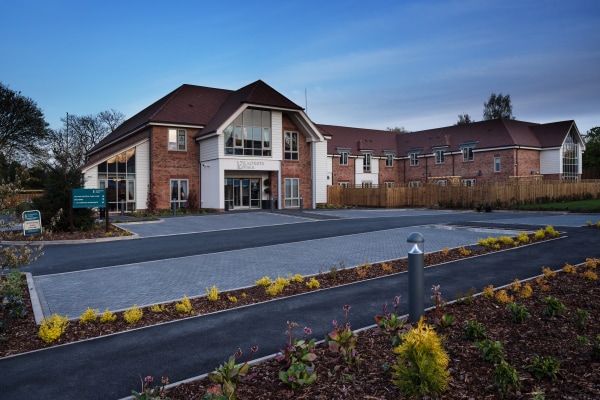
The construction industry heavily relies on the weather. From the initial planning stages to the finishing touches, the elements can significantly affect project timelines, worker productivity, material durability, and overall budget. Let's explore how weather conditions can impact construction costs:
1. Schedule Delays:
Unfavorable weather, such as rain, snow, or extreme heat, can bring construction activities to a standstill, causing project delays. These delays can lead to additional expenses, such as paying workers during idle time or rescheduling equipment rentals.
2. Damage to Materials and Equipment:
Prolonged exposure to rain can result in damage to materials like wood, which may require replacement. Metal equipment and structures are also susceptible to corrosion when exposed to damp conditions. Furthermore, machinery used in dusty environments may need frequent maintenance or even replacement.
3. Safety Concerns:
Wet or icy conditions increase the risk of accidents on construction sites. This not only impacts worker productivity but also raises the potential for compensation claims, leading to further cost escalation. Contractors may need to invest more in safety measures, equipment upgrades, or additional training during inclement weather.
4. Increased Labor Costs:
Working under challenging weather conditions often leads to decreased productivity among workers. Consequently, labor costs tend to rise due to reduced efficiency and output.
Tasks often encounter delays due to unfavorable weather conditions, including extreme heat. In some cases, overtime payments may be necessary to compensate for these delays.
Shortages of materials and fluctuating costs can also pose challenges. Inclement weather can disrupt transportation, resulting in delays in delivering materials. This can lead to a scarcity of materials, causing prices to rise.
Expenses for weatherproofing the site may be required. This can involve additional investments, such as using tarps, constructing shelters, or installing sump pumps to remove water.
Designs may need to be adjusted to address weather-related challenges, which can result in additional engineering costs. The implementation of features like foundations or roofing might also require changes based on the season or unexpected weather patterns.
Weather conditions can impact the energy needs of the site. Cold temperatures may require heating systems, while hot conditions could necessitate fans or air conditioning units.
Weather-related delays could also lead to extensions for construction permits or rentals, resulting in renewal fees.
Lastly, if adverse weather affects the quality of construction work, there may be costs for repairs or reinforcements after the project is completed.
Construction planners and managers must take into account the impact of weather on their project timelines, budgets, and strategies. To prepare for the unpredictable nature of weather and its potential financial implications, they can employ various techniques such as utilizing weather prediction tools, adhering to a strict schedule, obtaining weather insurance coverage, and allocating contingency funds.
How to Avoid Construction Project Delays?
October 30, 2022
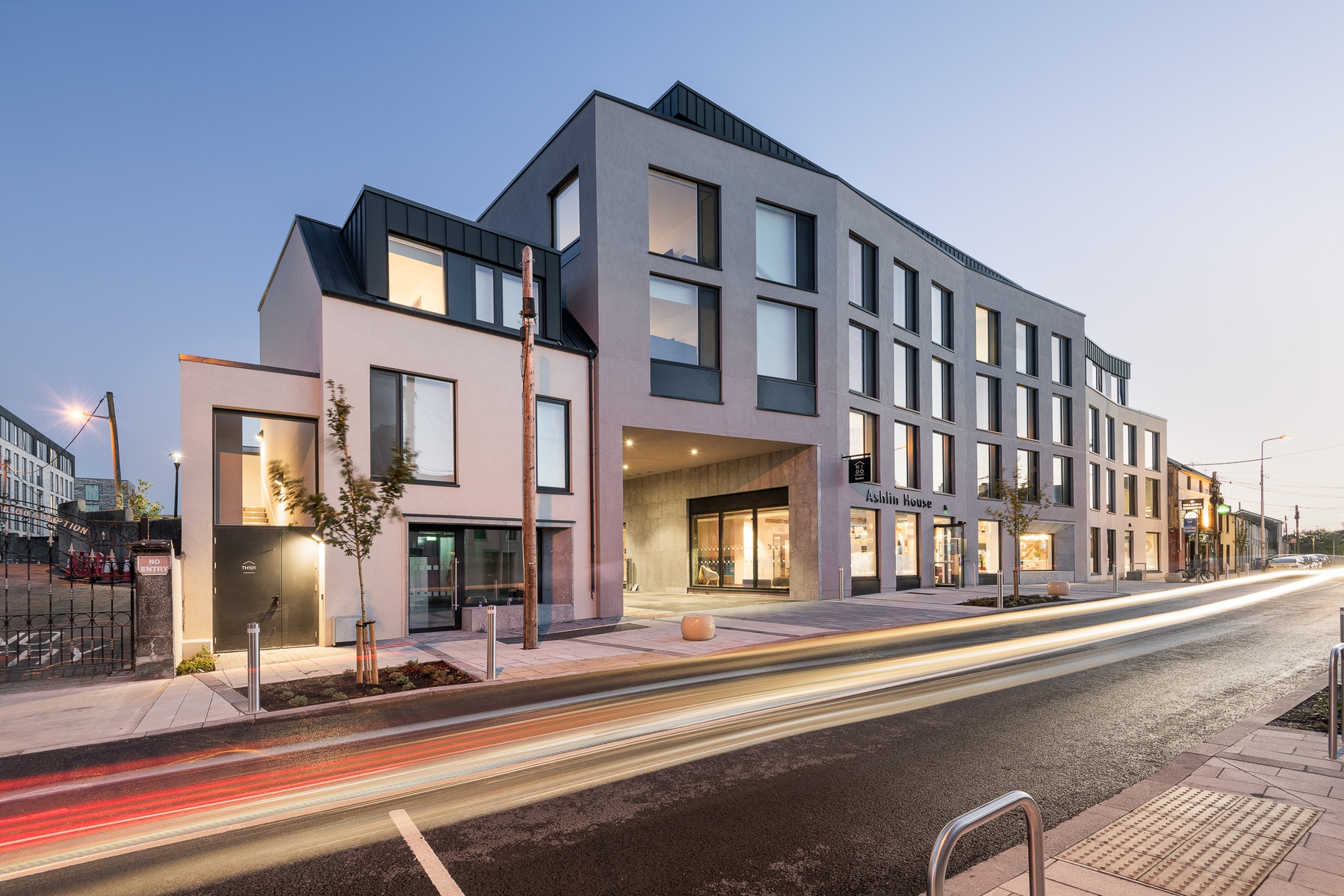
Construction delays are an inevitable part of the process, but they can be prevented with proper planning and foresight. At New Build Contractors, we firmly believe that a comprehensive plan is crucial for timely project execution. Here are some tips for ensuring progress: Embrace material flexibility, stay informed about suppliers, and ensure transparency in bids and timelines. As professionals in the field, we know that being open to adjustments and having up-to-date information is key to preventing avoidable obstacles. Our reputation depends on transparent communication with our clients, and we are committed to delivering projects on time and within budget.
Step 1: Plan for Success;
Proper planning is crucial to the success of any construction project. This means taking the time to identify potential issues and create contingency plans. By being proactive, we can avoid costly delays and setbacks.
Step 2: Embrace Technology;
In today's fast-paced world, technology is a critical tool for construction managers. By leveraging the latest software and apps, we can streamline processes, improve communication, and enhance overall efficiency.
Step 3: Set Expectations, Not Promises;
While it may be tempting to make promises, it's more sensible to set clear expectations. By keeping our clients informed of any challenges, we not only build trust but also give ourselves valuable time to handle unexpected setbacks.
Step 4: Know Your Contract Inside and Out;
Understanding the details of your construction contract is essential. Pay attention to provisions related to delays and know the steps for resolving them. Take the time to review each clause carefully and seek clarification before proceeding.
Step 5: Value Your Construction Team;
Creating a positive work environment and acknowledging the work of our team can significantly boost morale and efficiency. As construction managers, we have a responsibility to not only assign tasks but also provide necessary support. The collective spirit of our team is essential for project success.
Step 6: Communication is Key;
Effective communication is essential in the construction industry. By bridging the gap between confusion and clarity, we can ensure cohesion and ultimately, project success.
Construction delays can be a major setback for any project, but some strategies can be implemented to minimize their impact. Proactive measures such as thorough planning, effective communication, and regular monitoring can help identify potential delays early on. Additionally, being adaptable and having contingency plans in place can help mitigate the impact of any unforeseen delays.
It is important to remember that construction delays can often be avoided or minimized through collaboration and communication. Building a strong relationship with all project stakeholders can greatly reduce the chances of delays. Addressing concerns and working together can pave the way for solutions and ensure that the project moves forward smoothly.
At New Build Contractors, we understand the importance of being proactive, and adaptable, and fostering communication. We have learned through experience that implementing these strategies can significantly minimize the impact of construction delays. Let us help you keep your project on track and avoid any unnecessary setbacks.
Why is Construction Management Important?
September 22, 2022
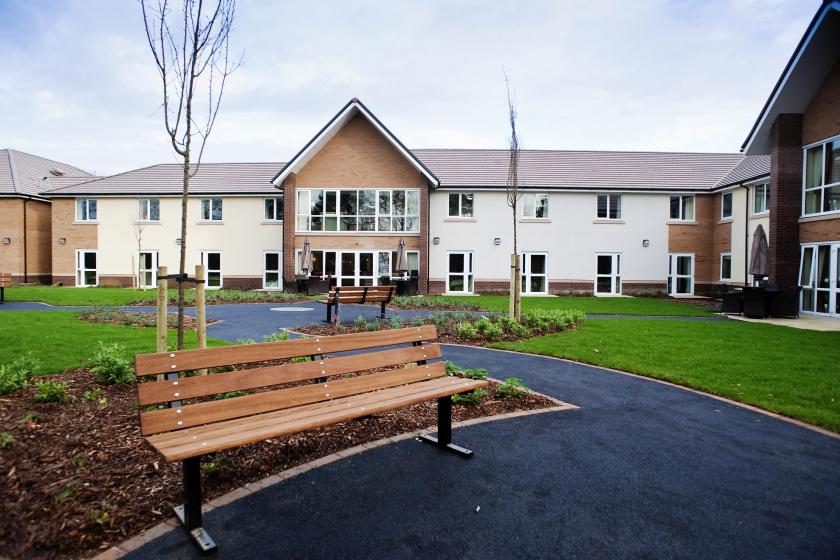
Construction management is an indispensable aspect of large-scale construction projects that ensures their successful execution. Construction projects are complex, and they entail a multitude of challenges and uncertainties that can lead to disruptions, delays, and escalated costs. Therefore, the importance of construction management in such scenarios cannot be overstated.
One of the primary advantages of construction management is its ability to bring an organized approach to the project. While every construction stage may have its protocols, construction management serves as the overarching framework that ensures effective synchronization among these distinct parts. Similar to an orchestra, where each instrument has its sound, construction management brings all stakeholders together to create a symphony.
Collaboration, communication, and coordination are fundamental to construction management. By fostering problem-solving and ensuring that all stakeholders are on the same page, construction management can anticipate potential issues in advance, streamline workflows, and ensure optimal utilization of resources, both human and material.
In an industry where exceeding project timelines can have serious consequences, construction management plays a crucial role in safeguarding the project schedule. It ensures that the project is completed within the set timelines, and the client's expectations are met. Additionally, construction management ensures that the project is delivered within budget, and the quality of the work meets the requisite standards.
Construction management also plays a critical role in ensuring safety on the construction site. It ensures that all the necessary safety measures are in place, and the workers are trained and equipped to handle any potential hazards. It also ensures that the project adheres to all the relevant safety regulations and standards.
Moreover, construction management helps in managing the risks associated with the construction project. It identifies potential risks, assesses their impact, and develops mitigation strategies to minimize their impact on the project. This proactive approach helps in avoiding potential delays and cost overruns.
In conclusion, construction management is the backbone of any successful construction project. It brings an organized approach to the project, fosters collaboration, communication, and coordination, safeguards the project's schedule, ensures safety on the construction site, and manages risks associated with the project. Therefore, construction management must be given due consideration and implemented from the outset of any construction project.
Construction management is a complex process that involves a wide range of skills and expertise. It requires a deep understanding of the construction industry, as well as the ability to manage people, resources, and processes effectively. A successful construction manager must be able to balance multiple priorities, identify and mitigate risks, and ensure that all stakeholders are kept informed and engaged throughout the project.
One of the key responsibilities of a construction manager is to oversee the planning and design stages of a project. This involves working closely with architects, engineers, and other professionals to develop a comprehensive project plan that takes into account all relevant factors, such as budget, timelines, and regulatory requirements. The construction manager must also ensure that the project plan is realistic and achievable and that it aligns with the goals and objectives of the project stakeholders.
Once the planning and design stages are complete, the construction manager must focus on executing the project plan and ensuring that it stays on track. This involves closely monitoring progress and identifying potential risks and issues that could impact the project's timeline, cost, or quality. The construction manager must also be able to make timely decisions to mitigate these risks and keep the project moving forward.
In addition to managing the day-to-day operations of the project, the construction manager must also be skilled in stakeholder communication. This involves keeping all project stakeholders informed and engaged throughout the project lifecycle, from the initial planning stages to the final completion and handover. Effective communication is essential for building trust and ensuring that all stakeholders are aligned with the project goals and objectives.
In conclusion, construction management is a critical function that plays a vital role in ensuring the success of construction projects. A skilled construction manager can help ensure that projects are completed on time, within budget, and to the highest quality standards. By balancing multiple priorities, identifying and mitigating risks, and engaging stakeholders throughout the project lifecycle, construction managers can help bring projects to life and ensure that they deliver maximum value to all stakeholders.
How does Cold Weather Affect Construction?
August 15, 2022
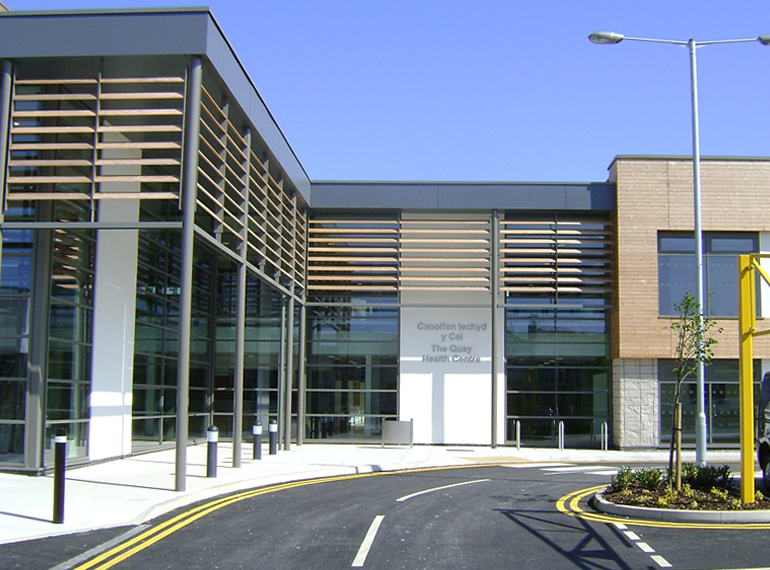
Cold weather poses challenges, for the construction industry affecting not project timelines but also the safety and well-being of workers. Here are five significant impacts of weather on construction during winter;
1. Delays in Project Schedule; When temperatures drop it takes longer for construction materials like concrete to set properly. This can cause setbacks in activities such as laying foundations, brickwork, and preparing slabs. Additionally, wintry conditions like snowstorms and frost can further contribute to these delays. As a result, professionals such as Concrete Finishers need to plan their tasks carefully based on weather forecasts.
2. Worker Safety; Ensuring the safety of workers becomes crucial during the weather. Operating machinery like concrete and dump trucks under wintry conditions can be hazardous. In several regions known for snowstorms and icy terrains, those working on projects face additional risks. Companies like New Build Contractors prioritize the well-being of their workforce both on-site and during commuting.
3. Hazardous Road Conditions; Slippery roads covered in ice and snow increase the risk of accidents. Large construction vehicles and equipment towing may find it difficult to navigate conditions leading to necessary pauses in construction activities to maintain crew safety.
4. Impact on Material Performance; Cold temperatures affect the performance of materials used in construction projects. For example, low temperatures can make some types of adhesives or coatings less effective or even brittle compromising their integrity over time.
5. Increased Energy Consumption; Cold weather demands energy consumption for heating structures or providing warmth, for workers' comfort during breaks or rest areas onsite.
By considering these factors caused by weather conditions construction companies must take measures to mitigate risks and adjust project plans accordingly.
Extreme cold weather doesn't just impact humans. It also has an effect, on machinery. When equipment is exposed to freezing temperatures it can malfunction, which not poses safety risks but can also lead to repair expenses.
In addition to humans and machinery cold weather can also have an impact on construction supplies, particularly concrete. Temperature changes can affect the quality of concrete causing suppliers to carefully label their supplies as a quality assurance measure. Cold temperatures cause concrete to lose heat and moisture quickly potentially compromising its strength.
Although winter presents challenges they are not impossible to overcome. With planning it is feasible to pour concrete during colder months; however, the ideal temperature range for this process is typically between 40° and 60°F. Nevertheless, for complications and delays in construction projects in regions like Utah with dry and cool weather conditions, late spring is often recommended.
Regardless of weather conditions companies such as New Build Contractors ensure that construction quality remains uncompromised. Their ability to adapt construction timelines coupled with a commitment to practices allows them to deliver exceptional results regardless of the season. If you are considering a construction project during winter months professionals like those, at New Build Contractors can provide expert guidance through the complexities of an outcome.
What are the Stages for Commercial Construction?
June 24, 2022
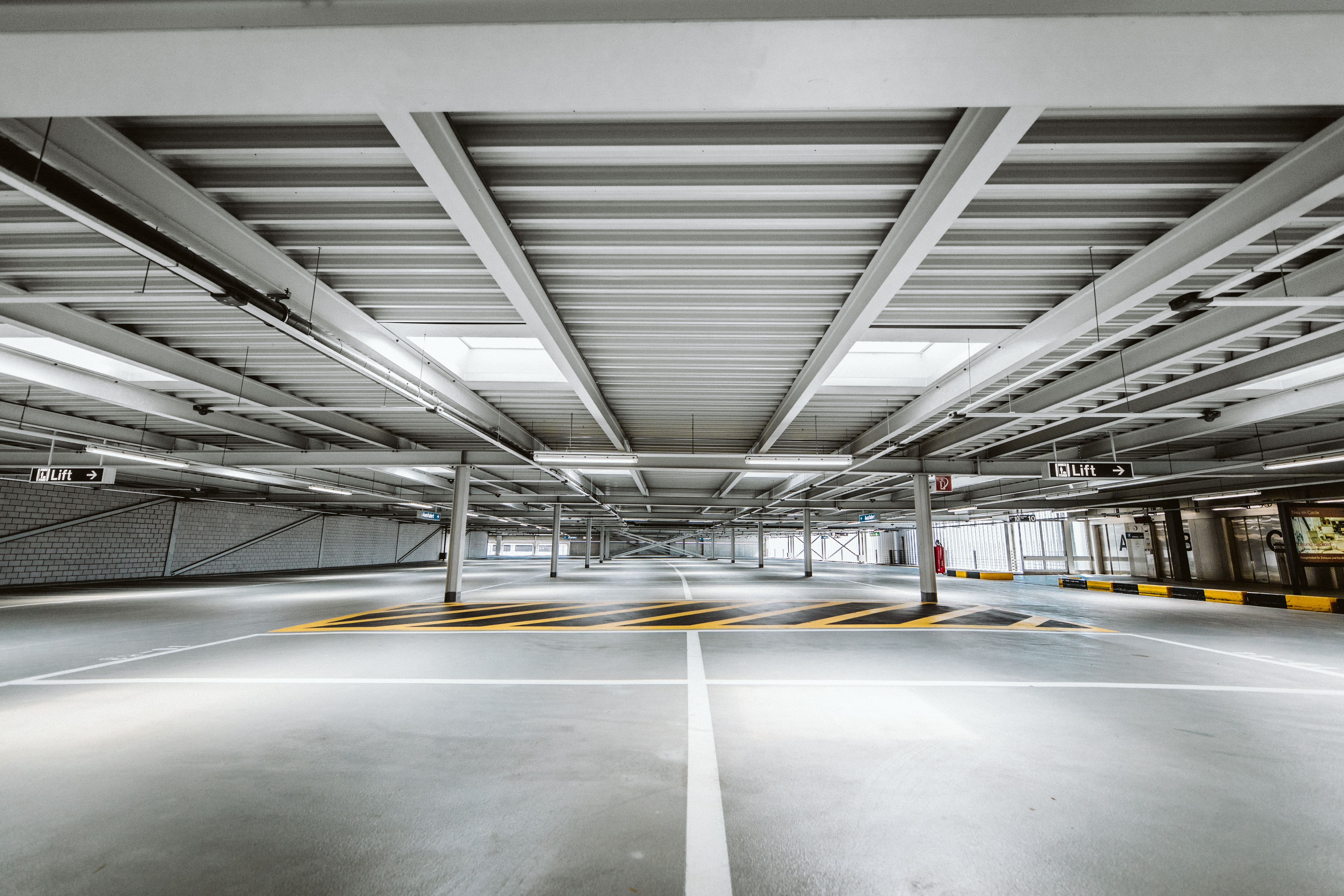
Building a commercial structure involves more than just assembling materials. The building phase is just a small part of the entire project. Proper planning before design and construction is crucial to prevent potential issues.
Construction management experts understand the importance of this planning phase and utilize it to minimize problems during the construction process. The process also continues after construction to ensure legal compliance and meet the client's standards. Let's go through the construction process step by step.
Step 1: Development and Planning
The most crucial phase of a commercial construction project is the development and planning stage. This step sets the foundation for the rest of the project. The location, budget, and choice of a general contractor all influence the subsequent steps.
Finding the Right Location
The project's cost heavily depends on the location in real estate. Land and construction expenses vary significantly based on location. Areas with high demand tend to have higher land prices for construction.
It is important to consider the location of a property and its accessibility for both customers and employees. This is especially crucial for in-person businesses, like restaurants or medical offices.
Before purchasing a site and beginning construction, it is necessary to understand the zoning requirements in the city. Some cities have strict regulations on the type of buildings that are allowed. Additionally, there may be clauses in the property agreement that restrict construction. These restrictions can be permanent, for environmental preservation, or temporary. Temporary restrictions may be put in place to allow the city or town to review and approve the design, as well as ensure that nearby residents agree with the project.
Some moratoriums aim to preserve the existing state of an area. For example, a city may implement a moratorium on the construction of smaller multifamily housing structures in a downtown area. This measure is intended to maintain the character of the densely populated downtown area.
In certain situations where temporary restrictions are in place, construction can proceed by fulfilling certain conditions such as paying fees, undergoing site inspections, and obtaining building permits from the city. Adequate utility services are also crucial for the construction, including sufficient sewer and water lines to cater to the building's needs. The presence of firefighting services and on-site hydrants is equally important. Moreover, the roads in the vicinity should be able to withstand the anticipated traffic from the construction project.
When assessing potential sites, the construction team must examine the soil to determine if additional reinforcement is necessary for the structure. If the site has a history of industrial use, conducting a soil test becomes essential to identify any potential contaminants that may require remediation. The cost of finding an alternative site may be more economical than addressing existing contamination issues, depending on the extent and location of the contamination.
Lastly, a boundary survey that encompasses easement locations and certifies the site's elevation is necessary. If the land needs to be subdivided into smaller parcels through re-platting, approval from various departments in the city or county may be required.
Budgeting
Creating a budget for construction projects involves first understanding the costs associated with building structures nationwide. The price per square foot for a new commercial building varies depending on its size and location. To avoid any discrepancies in your budget, it is important to consult with construction managers who can provide accurate cost estimates for your project. These managers are familiar with the specific factors that influence costs in the area where you intend to build, allowing for more realistic estimates. By taking a comprehensive approach to construction management, they can assist with planning the various stages of your commercial building project, ultimately helping you stay within your established budget.
The experts can take charge of much of the planning, allowing all parties involved in the project to coordinate and communicate openly, ensuring that the project stays on track according to the proposed timeline for commercial construction.
In the second step, known as the pre-design phase, certain aspects overlap with the development and planning stage. This is because both stages involve establishing expectations and goals for the project. For example, some may choose to schedule a meeting between the architect and general contractor during the pre-design phase, while others may do this during the planning stage. Some even combine the pre-design and planning stages into one, using the design phase as the second step in the sequence of commercial building construction.
Whether the pre-design phase is a separate step or part of the planning stage, its purpose remains the same - to outline the specific needs of the project. Those involved in the project will determine crucial elements that will impact the subsequent phases of commercial building construction, such as:
- The number, size, and purpose of the rooms in the building.
- The overall orientation of the structure in relation to local roads and utilities.
- The materials and equipment required for construction, along with associated costs.
- Estimated costs for the construction phase.
- A general timeline for the commercial construction, which will be used to outline contracts.
In order to meet the requirements, it is important to hire engineers and provide more specific information during the design phase.
Step 3: Designing the Building
The design phase of commercial construction involves creating detailed blueprints and plans for the building. This requires the expertise of various engineers to ensure that the structure is strong and meets all necessary codes. A mechanical engineer will review the plans for the internal systems, such as plumbing and HVAC. Structural engineers will ensure that the plans are structurally sound. Electrical engineers will design the electrical supply for the building. Civil engineers will design the connections to the local infrastructure and parking areas. Once this phase is complete, construction can begin on the major parts of the project.
Step 4: Preparing for Construction
The pre-construction phase of building a commercial building focuses on paperwork. During this stage, you will need to obtain the necessary permits and insurance for the project. You will also gather bids from vendors to ensure that the procurement phase stays within budget. Finally, you will assemble the field team that will be responsible for the site work.
Step 5: Obtaining Materials
The procurement phase is essential for staying within budget. Exceeding the projected cost is a potential outcome when constructing a building. However, it is also crucial to consider the quality of services and materials used. It is important to strike a balance between your budget and selecting durable construction materials. Additionally, when choosing subcontractors, prioritize those with a proven track record of quality work. While a general contractor usually manages the procurement phase, having a skilled construction management team ensures effective communication throughout the process. Open communication is vital in avoiding issues arising from misunderstandings or unmet expectations.
Step 6: The Construction Phase
The preceding steps serve to prepare for the actual construction process. By focusing on thorough preparation during the initial stages of commercial building construction, unexpected delays or project overruns can be minimized. A significant part of the project involves preparing the site for the structure, which is crucial for ensuring the building's structural integrity and safety. Therefore, it is essential not to compromise on quality during this initial phase.
Site Preparation
During the site preparation phase, the plot of land is transformed into a functional job site for the upcoming weeks of construction. After the meeting, the groundwork can commence. Temporary structures and storage facilities must be constructed on the site, serving as workspaces for the management team and providing a secure location for equipment and materials.
In addition to this, the site preparation involves clearing vegetation and excavating the area. Depending on local regulations, proper drainage systems may also be implemented to prevent flooding in the site and its surroundings.
Furthermore, the preparation includes setting up utilities and making necessary connections for water, waste, and power. Each of these components must undergo inspections before construction can proceed.
Once the site is prepared, the commercial building process can begin. The pivotal step in this phase is the construction of the building itself. The first task is to create a solid foundation using poured concrete. Subsequently, the framework of the building is erected, encompassing the internal components that provide structural support. Once the framing is complete, the building requires the installation of its roof and siding.
Installation of the electrical systems, plumbing, and HVAC ductwork within the walls will take place. The internal phase of the project involves the construction of walls, laying down flooring, installing windows and doors, putting up light fixtures, and applying paint as specified in the plans. Depending on the design, contractors may perform additional tasks. Occupants of the building will be most familiar with the internal aspects since they will spend the majority of their time there. Thus, these elements are of utmost importance in the construction process.
On the other hand, the external phase entails the creation of exterior walls, installation of windows if not already done, and placement of exterior doors. This work contributes to the overall impression that visitors and neighbors will have of the structure. Careful attention to detail during this stage can ensure the satisfaction of both occupants and nearby individuals. Additionally, any temporary structures and material storage facilities will be removed.
Finally, landscapers will complete the project by planting grass, flowers, or trees on the site. These natural components serve to mask any signs of recent construction, enhance the aesthetics of the area, and provide color or shade.
The building is not yet fully prepared for occupants to move in. There is one final step that needs to be taken to ensure legal compliance and the safety of the building. Once construction is complete, the general contractor will accompany you on a walkthrough of the building. During this walkthrough, you will assess the quality of the project. If you or any other inspectors discover any issues or evidence of unsatisfactory work, these will be recorded on a punch list. Only after all the items on the punch list have been addressed and corrected will you be able to obtain a certificate of substantial completion from the architect. This certificate grants permission to bring in temporary, portable items such as furniture and equipment. It also allows for an official building inspection to take place, which is necessary for occupancy.
Passing the building inspection signifies the successful completion of the construction project. From this point onwards, the commercial structure can safely accommodate people working inside. The company that will utilize the site can now commence their operations within the building.
Importance of Proper Restaurant Construction
April 14, 2022
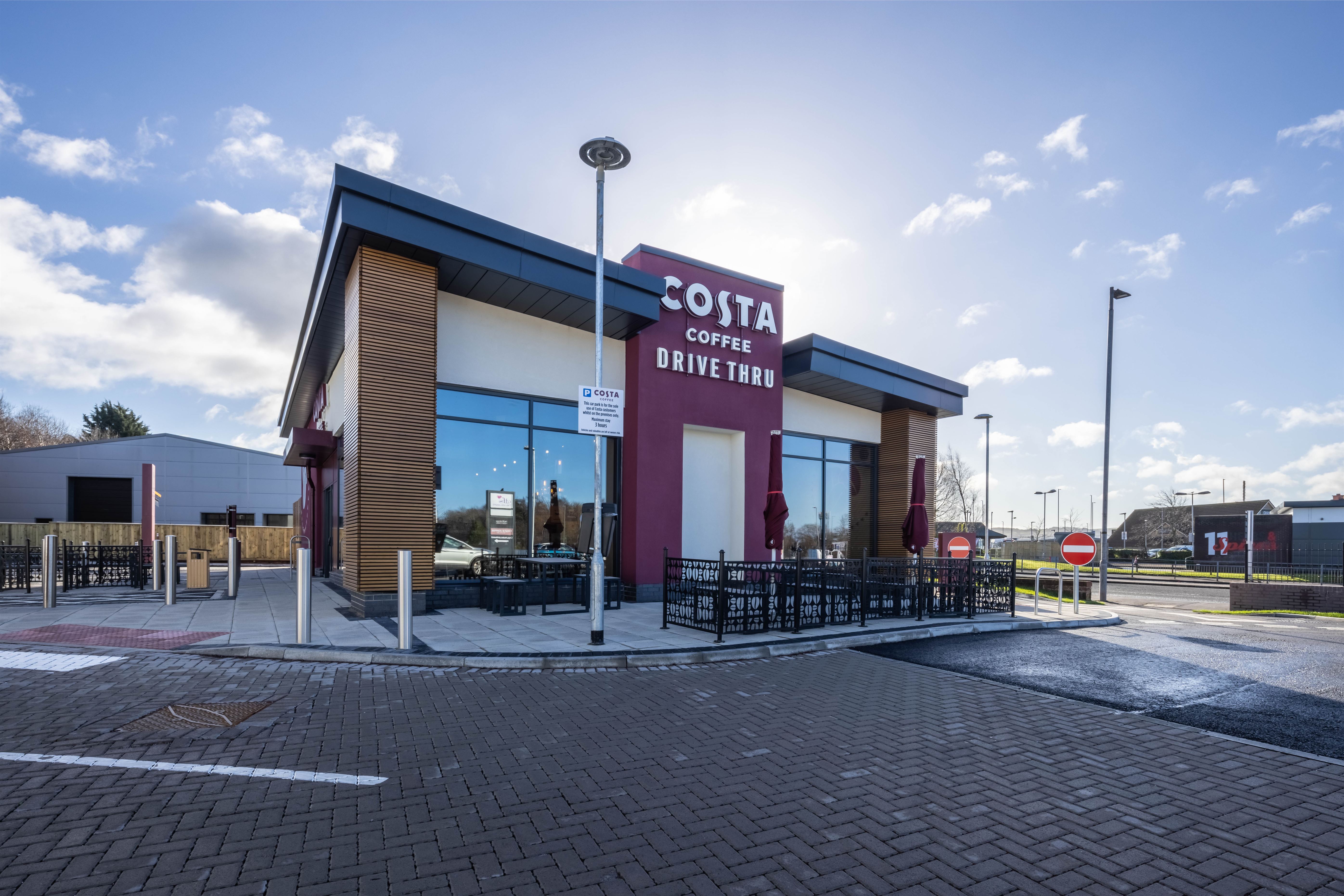
The Role of Aesthetics and Ambiance
While functionality and safety are paramount, the ambiance of a restaurant plays an integral role in the dining experience. The construction needs to echo the theme of your restaurant, be it a modern, minimalistic bistro or a rustic farmhouse eatery. Every design element, from lighting to seating arrangement, has to align perfectly with the restaurant's brand image. Patrons often remember their dining experience, not just for the food but for the ambiance it offers. A well-constructed restaurant with attention to aesthetic details creates an inviting atmosphere, which can significantly influence customer retention.
Optimizing Space Usage
Professional construction ensures optimal space utilization. A restaurant must have a strategic layout, balancing the dining area, kitchen space, storage, and restrooms. Efficient space usage ensures smooth movement for staff, leading to quicker service, and provides comfort for patrons.
Sustainable and Eco-friendly Practices
With rising awareness about sustainability, many restaurants are leaning towards eco-friendly construction. Not only is this beneficial for the environment, but it also appeals to a growing segment of environmentally conscious customers. Using sustainable materials, energy-efficient appliances, and waste-reducing measures can set your restaurant apart in a crowded market.
Adaptable to Future Modifications
A professionally built restaurant is designed keeping in mind not just the present but potential future modifications. As your business grows, you might need to expand or modify certain sections. Proper construction will ensure that such renovations can be done without major disruptions or astronomical costs.
Acoustic Control
The importance of acoustics in a restaurant setting is often underestimated. No one likes to dine in a place where conversations get drowned in kitchen noise or echoes. Professional restaurant construction takes into account the acoustic design, ensuring that noise is kept at a comfortable level.
Conclusion
The construction of a restaurant goes beyond just erecting walls and setting up tables. It's an intricate balance between design, functionality, safety, and customer experience. Investing in professional restaurant construction lays a strong foundation for a successful and sustainable business.
For those in the UK seeking the pinnacle of restaurant construction expertise, New Build Contractors offers unparalleled services, ensuring every aspect of your restaurant's build is executed with precision and care.
The Significance of Adequate Parking Lot Construction
March 22, 2022
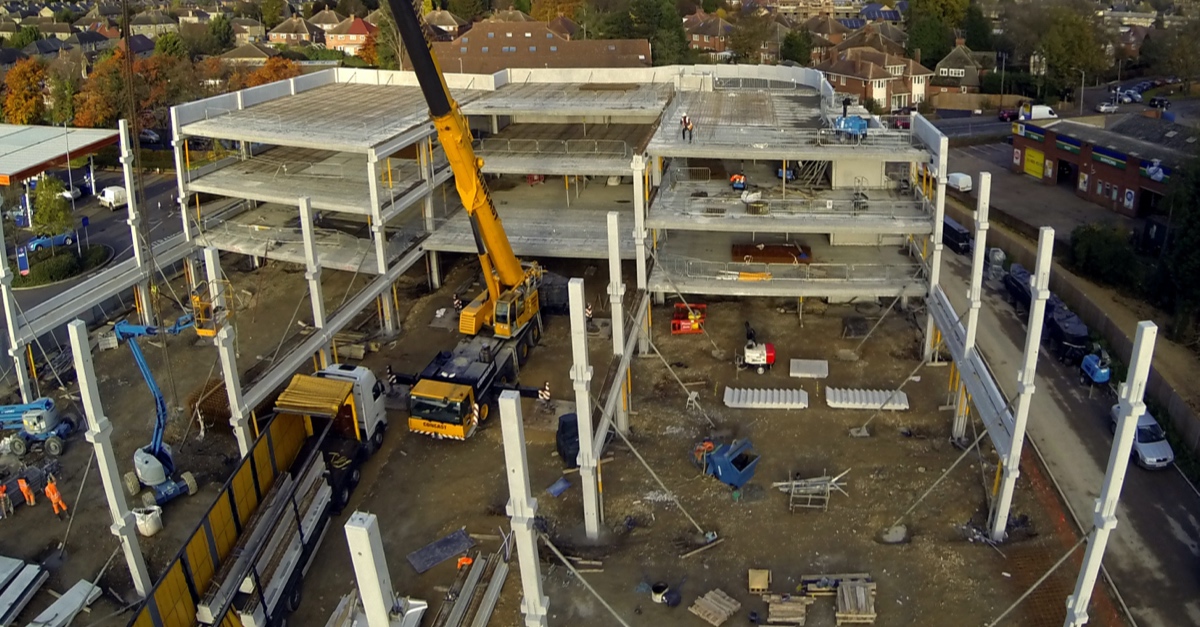
Parking lots are an essential component of modern-day establishments, serving as a crucial point of entry and exit for visitors. They provide a safe and convenient space for vehicles to be parked while their owners go about their business. However, constructing a parking lot is not a simple task, as it requires careful planning, design, and execution to ensure functionality, safety, and durability.
One of the most critical factors to consider when constructing a parking lot is safety. A well-designed parking lot should have marked lanes for vehicles and pedestrians to reduce the risk of accidents. By separating these two paths, drivers and pedestrians can move around the lot without fear of colliding with each other. Additionally, the use of traffic signs and speed bumps can further enhance safety by controlling the speed of vehicles.
Another essential aspect of parking lot construction is durability and longevity. A properly constructed parking lot can withstand heavy vehicle traffic and harsh weather conditions without requiring frequent maintenance or repairs. This not only saves money but also ensures that the parking lot remains functional and safe for years to come.
To optimize space usage, a carefully planned parking lot design is crucial. By maximizing the capacity to accommodate vehicles without causing congestion or accessibility issues, traffic flow is thoroughly considered to ensure smooth entry and exit. This can be achieved through the use of angled parking spaces or multi-level parking structures, which can significantly increase the number of vehicles that can be parked in a given area.
Finally, addressing drainage requirements is essential to ensure the longevity of the parking lot. Proper drainage can prevent water accumulation, which can lead to potholes, cracks, or even damage to the foundation. By incorporating effective drainage systems, such as storm drains or catch basins, water can be efficiently directed away from the parking lot, ensuring its durability and longevity.
In conclusion, constructing a parking lot is a complex task that requires careful consideration of various factors. By ensuring safety, durability, space optimization, and proper drainage, a well-designed parking lot can provide convenience and functionality for visitors while also enhancing the initial impression of the establishment.
Parking lot construction is an essential aspect of any property development, whether it is for commercial, residential, or public use. The construction of a parking lot involves a range of considerations, from effective drainage systems to compliance with regulations, and future considerations. While the primary purpose of a parking lot is to provide a safe and secure area for vehicles to park, there are other benefits to be gained from a well-designed and constructed parking lot.
One of the most significant benefits of a well-designed parking lot is the enhancement of visual appeal. The aesthetics of a premises can be greatly improved by creating an organized and well-designed parking lot. This can be achieved through the use of designated parking spaces, clear signage, and ample lighting. By incorporating these elements, the parking lot becomes an extension of the property, contributing to its overall appeal.
Another important consideration in parking lot construction is compliance with regulations. Different areas have specific regulations that govern parking lot construction. By ensuring that the construction is done properly, all legal requirements can be met, including accessible spaces, space dimensions, and appropriate signage. Compliance with regulations also ensures that the parking lot is safe and secure for both vehicles and pedestrians.
In response to the growing importance of sustainability, the use of permeable pavements is becoming more popular in parking lot construction. These pavements allow water to pass through, reducing runoff and replenishing groundwater supplies. This is an environmentally-friendly solution that also reduces the risk of flooding in the area.
While the initial investment in parking lot construction may seem expensive, it ultimately proves to be cost-effective in the long run. By minimizing the need for repairs, replacements, and potential liability issues, it can save money over time. Additionally, a well-designed and constructed parking lot can significantly enhance the value of a property, particularly for commercial establishments. This improvement in value can be a beneficial long-term investment.
Finally, future considerations are an essential aspect of parking lot construction. When planning a parking lot, it is important to anticipate future needs and potential expansions. This allows for flexibility and adaptability, ensuring that the parking lot can meet the changing needs of the property and its users.
In conclusion, parking lot construction is an important aspect of property development that requires careful consideration of a range of factors. By incorporating effective drainage systems, enhancing visual appeal, complying with regulations, considering the environment, ensuring long-term cost-effectiveness, increasing property value, and anticipating future needs, a well-designed and constructed parking lot can provide a range of benefits to the property and its users.
A well-designed parking lot is a vital component of any commercial or residential property. It not only provides a safe and convenient space for vehicles but also contributes to the overall aesthetic appeal of the property. As such, parking lots need to be flexible enough to adapt and accommodate any disruptions that may arise.
Professional parking lot construction is a wise investment for business owners and property managers alike. It entails more than just providing space for vehicles. Professional construction ensures that the parking lot is safe, efficient, and visually appealing. It takes into account factors such as drainage, lighting, accessibility, and maintenance to ensure that the parking lot meets the highest standards.
As a business owner, a well-constructed parking lot can leave a lasting impression on your customers. A visually appealing parking lot creates a positive image of your business and can attract more customers. A poorly constructed parking lot, on the other hand, can be a turn-off for customers and may even lead to accidents or damage to vehicles.
For property managers, a well-constructed parking lot ensures the safety and convenience of tenants and visitors. It also helps to reduce liability risks and maintenance costs associated with a poorly constructed parking lot. Additionally, a well-maintained parking lot can improve the overall value of the property and attract more tenants.
In conclusion, investing in professional parking lot construction is a smart choice for both business owners and property managers. It ensures that the parking lot is safe, efficient, and visually appealing, leaving a lasting impression on customers and improving the overall value of the property.
How do we ensure that hotels and resorts are built to maximize guest comfort and experience?
February 22, 2022

Creating a memorable experience for hotel and resort guests is no easy feat, and it requires the expertise of construction companies like New Build Contractors. We go beyond simply constructing buildings and instead focus on designing environments that cater to the diverse needs of guests from all over the world. Achieving guest comfort and delivering experiences requires careful planning, innovative design, and meticulous attention to detail.
To meet these challenges, New Build Contractors often collaborate with hospitality consultants, interior designers, and architects who specialize in hotel and resort projects. These experts offer valuable insights into the latest trends and best practices, ensuring that guest comfort and satisfaction are always top priorities.
Understanding the guest persona is also crucial when designing hotels and resorts. Different establishments cater to different types of guests, whether it's a business hotel, luxury resort, or budget inn. Factors such as room sizes, available amenities, technological integrations, and even the choice of bedding must all be carefully considered to meet the needs of each guest demographic.
Optimal use of space is another key factor in creating a memorable guest experience. Designing lobbies that welcome visitors with open arms, ensuring ample natural light floods in to create a pleasant ambiance, creating cozy nooks where guests can unwind and relax, and incorporating recreational areas for leisure activities are all important considerations.
In addition to these factors, we pay attention to sustainability and environmental impact when designing hotels and resorts. Using energy-efficient materials and technologies, incorporating green spaces and gardens, and implementing waste reduction strategies all contribute to a more sustainable and responsible hospitality industry.
Ultimately, creating a memorable guest experience requires a holistic approach that incorporates all of these factors and more. By working closely with experts and paying careful attention to every detail, we can help hotels and resorts deliver exceptional experiences that keep guests coming back time and time again.
As the hospitality industry continues to evolve, hotels and resorts have become more focused on creating an exceptional guest experience. This requires a careful consideration of various factors that go into ensuring that guests have a comfortable, convenient, and enjoyable stay. From noise reduction measures to integrating technology, hotels, and resorts are implementing innovative strategies to enhance the overall guest experience.
One of the most common complaints among guests is noise disruptions. To address this issue, we are employing soundproofing techniques, such as using barriers, installing double-glazed windows, and strategically placing utilities. These measures help to minimize noise disturbances and ensure that guests can enjoy a peaceful and relaxing stay.
To further enhance the guest experience, hotels and resorts often embrace local culture and traditions. This is achieved by incorporating materials, and designs, and even featuring art or cultural performances on their premises. By immersing guests in the local culture, hotels, and resorts create a unique and memorable experience that sets them apart from other establishments.
In response to the growing awareness of guests, we prioritize sustainability in our building practices. This includes utilizing eco-friendly materials, incorporating energy sources, conserving water, and reducing waste. By implementing sustainable practices, hotels and resorts reduce their environmental impact and create a healthier and more enjoyable environment for guests.
Given the era we live in, guests also expect integration of technology. This entails providing high-speed Wi-Fi access, smart room controls for convenience, and even digital concierge services. Construction efforts must ensure that infrastructure supports these integrations while maintaining appeal. This helps to ensure that guests have access to the latest technology and can enjoy a seamless and hassle-free experience.
Safety and accessibility are also important considerations for hotels and resorts. From implementing fire safety measures and emergency exits to creating an environment for abled guests with ramps, wider doors, and accessible amenities – all aspects are carefully addressed. By ensuring that guests feel safe and comfortable, hotels and resorts can create a welcoming and inclusive environment for all guests.
In conclusion, hotels and resorts are constantly looking for ways to improve the guest experience. By implementing innovative strategies such as noise reduction measures, embracing local culture, prioritizing sustainability, integrating technology, and ensuring safety and accessibility, hotels and resorts can create a unique and memorable experience for guests. These efforts not only benefit guests but also help to establish hotels and resorts as leaders in the hospitality industry.
The hospitality industry is one of the most competitive industries in the world. With so many hotels and resorts vying for the attention of guests, establishments must stand out from the crowd. One of the ways that hotels and resorts can achieve this is by constructing spaces that are not only aesthetically pleasing but also functional and comfortable. However, constructing spaces for the hospitality industry is not as simple as putting up a building and adding some furniture. It requires careful planning, collaboration with stakeholders, and an unwavering focus on providing a guest experience that is second to none.
One of the most critical aspects of constructing spaces for the hospitality industry is ensuring that the design is both functional and aesthetically pleasing. This means that hotels and resorts must consider a wide range of factors, including the needs and desires of their guests, the available space, and the budget they have to work with. To achieve this, many construction companies create mock rooms that undergo evaluations for comfort, functionality, and aesthetics. This ensures that the actual rooms not only meet but also exceed expectations.
Another critical consideration when constructing spaces for the hospitality industry is minimizing disruptions. Hotels and resorts cannot afford to have significant disruptions that could impact the guest experience. Therefore, construction companies must work closely with hotel management to ensure that renovations or construction projects can be completed without significant disruptions. This requires careful planning and coordination to ensure that any work is completed quickly and efficiently, without impacting the guest experience.
With a growing emphasis on health and wellness, many hotels and resorts are integrating features such as spa centers, fitness areas, meditation zones, and even air purification systems to enhance the well-being of their guests. This prioritization of guest well-being is essential for hotels and resorts that want to stand out in an increasingly competitive industry. By providing guests with amenities and features that promote health and wellness, hotels and resorts can create lasting memories and ensure that guests leave with a desire to return.
Finally, continuous feedback and refinements are critical when constructing spaces for the hospitality industry. After completing construction projects, feedback from guests, hotel staff, and management is highly valued. New Build Contractors often work closely with hotel management to conduct reviews and make refinements in subsequent projects. This ensures that hotels and resorts can continue to improve the guest experience and stay ahead of the competition.
In conclusion, constructing spaces for the hospitality industry is a complex and challenging process that requires careful planning, collaboration with stakeholders, and an unwavering focus on providing a guest experience that is second to none. By prioritizing guest well-being, creating functional and aesthetically pleasing spaces, minimizing disruptions, and continuously refining the guest experience, hotels, and resorts can stand out in an increasingly competitive industry and create lasting memories for their guests.
Recent Blogs
- Is Buying a New Build Home a Good Investment?
- Hidden Costs to Watch Out For During Construction
- The Stages of a New Build – From Groundworks to Handover
- Choosing the Right Roofing and Cladding Materials for Your Home or Development
- Building for the Future: Sustainable Materials and Practices for Modern Homes